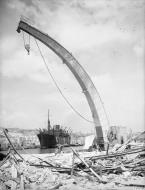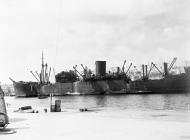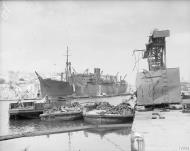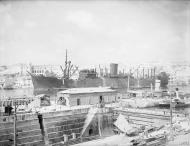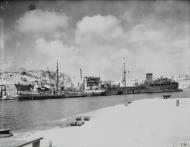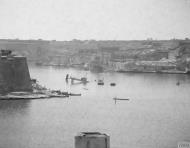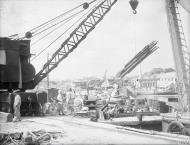Hawker Hurricane photographic information
Blenheim MkIV RAF 82Sqn recon Italian SV Pietro Querini off the Kerkenna Islands IWM C1913
Oblique aerial photograph taken from a Malta-based Bristol Blenheim Mark IV of No. 82 Squadron RAF, of the abandoned Italian supply vessel PIETRO QUERINI sinking off the Kerkenna Islands of Tunisia after being torpedoed by the submarine HMS UNION. The ship was part of a small convoy attempting to reach Tripoli, Libya.
Imperial War Museum IWM C 1913 https://www.iwm.org.uk/collections/item/object/205023058
Hawker Hurricane MkII RAF Malta Night Fighter at Ta Kali Malt IWM CM1291
Hawker Hurricane Mark IIs of the Malta Night Fighter Unit wait at readiness at Ta Kali, Malta.
Imperial War Museum IWM CM 1291 https://www.iwm.org.uk/collections/item/object/205208805
Hawker Hurricane MkIIs RAF 185Sqn T Z5265 at Hal Far Malta IWM CM1356
Hawker Hurricane Mark IIs of No. 185 Squadron RAF, lined up at readiness at Hal Far, Malta. Hurricane Mark IIB, Z5265 'T' (centre,) was the aircraft flown by the Commanding Officer, Squadron Leader P W O Mould, when he was shot down and killed after the Squadron had scrambled to intercept Italian fighters north-east of the Island on 1 October 1941.
Imperial War Museum IWM CM 1356 https://www.iwm.org.uk/collections/item/object/205208813
Hawker Hurricane MkIIs RAF 261Sqn take off from Ta Kali Malta IWM CM1353
Hawker Hurricanes of No. 261 Squadron RAF take off from Ta Kali, Malta, to intercept incoming enemy aircraft.
Imperial War Museum IWM CM 1353 https://www.iwm.org.uk/collections/item/object/205208812
Hurricane IIb RAF 185Sqn K Sqt GE Horicks Z2961 Ta Qali Malta Mar 1942 IWM CM1293
Hawker Hurricane Mark Is of No. 261 Squadron RAF at Luqa, Malta.
Imperial War Museum IWM CM 1293 https://www.iwm.org.uk/collections/item/object/205208806
Hurricane I RAF 261Sqn W9133 at Ta Kali Malta 1941 IWM C2025
The remains of a Gloster Sea Gladiator, which formerly flew with the Malta Fighter Flight and No. 261 Squadron RAF, lies by the side of the airfield at Ta Kali, Malta. In the background is a parked Hawker Hurricane Mark I, W9133, of No. 261 Squadron.
Imperial War Museum IWM MH 8300 https://www.iwm.org.uk/collections/item/object/205207983
Hurricane I RAF 261Sqn at Luqa Malta 1941 IWM CM2270
Hawker Hurricane Mark Is of No. 261 Squadron RAF at Luqa, Malta.
Imperial War Museum IWM CM 2270 https://www.iwm.org.uk/collections/item/object/205208905
Martin Baltimore MkIIIA RAF 223Sqn P FA342 taking off from Luqa Malta IWM CNA1115
Martin Baltimore Mark IIIA, FA342 P, of No. 223 Squadron RAF Detachment, taking off from Luqa, Malta for an attack on enemy targets in Sicily.
Imperial War Museum IWM CNA 1115 https://www.iwm.org.uk/collections/item/object/205209247
Mosquito II RAF 23Sqn P at the dispersal point Malta 27 Jun 1943 IWM TR1081
The CO of No 23 Squadron, Royal Air Force, Wing Commander John B Selby, DSO, DFC, and his observer looking at their De Havilland Mosquito II aircraft `P-Peter' while other members of the squadron watch from atop the blast wall at the dispersal point, Malta, 27 June 1943. The four .303in machine guns are corked to prevent dirt damaging them.
Imperial War Museum IWM TR 1081 https://www.iwm.org.uk/collections/item/object/205188652
Mosquito II RAF 23Sqn P with Wing Commander John B Selby Malta 27 Jun 1943 IWM TR1077
The CO of No 23 Squadron, Royal Air Force, Wing Commander John B Selby, DSO, DFC, and his observer looking at their De Havilland Mosquito II aircraft `P-Peter' while other members of the squadron watch from atop the blast wall at the dispersal point, Malta, 27 June 1943. The four .303in machine guns are corked to prevent dirt damaging them.
Imperial War Museum IWM TR 1077 https://www.iwm.org.uk/collections/item/object/205188651
Mosquito II RAF 23Sqn YPR DZ231 over Malta Jun 1943 IWM TR1073
Rear port view of a De Havilland Mosquito flying over the Mediterranean on its return to Malta from a raid on enemy territory in Southern Italy.
Imperial War Museum IWM TR 1073 https://www.iwm.org.uk/collections/item/object/205188648
Mosquito II RAF 23Sqn YPR DZ231 over Malta Jun 1943 IWM TR1075
A De Havilland Mosquito II DZ231 YP-R of No 23 Squadron, Royal Air Force flying over Malta.
Imperial War Museum IWM TR 1075 https://www.iwm.org.uk/collections/item/object/205188649
Hawker Hurricane RAF Malta
Photo 01: Hurricanes at readiness on a Maltese aerodrome.
Photo 01: Malta based Hurricanes taking off to intercept Italian raiders.
Hurricane MkIIb RAF 185Sqn GLP P/O Marcus W Kidson Z2402 Malta 1942.
P/O Marcus W Kidson was later shot down by Heinrich Leschert from 3./JG53 on 5th March 1942 North of La Valetta Malta
Aircrew RAF 272Sqn Wing Commander JK Buchanan at Luqa Malta IWM CM4523
Wing Commander J K Buchanan, Commanding Officer of No. 272 Squadron RAF, standing by one of his Squadron's Bristol Beaufighters at Luqa, Malta, shortly after being awarded the DSO.
Imperial War Museum IWM CM 4523 https://www.iwm.org.uk/collections/item/object/205126798

Main photo list including Hurricanes used to defend Malta
The Siege of Malta (World War II)
Date: 11 June 1940 – 20 November 1942 (2 years, 5 months, 1 week and 2 days)[1] Location: Malta Result: Decisive Allied victory[1][2]
Allied Forces Axis Forces United Kingdom Italy Malta Germany Southern Rhodesia Australia Canada New Zealand South Africa
Allied Naval Forces Axis Naval Forces Royal Navy Italy Free France Germany Greece Polish government-in-exile Norway United States
Allied Commanders and leaders Axis Commanders and leaders United Kingdom Andrew Cunningham
United Kingdom William Dobbie
United Kingdom Hugh Lloyd
New Zealand Keith ParkKingdom of Italy Francesco Pricolo
Nazi Germany Hans Geisler
Nazi Germany Albert Kesselring
Nazi Germany Martin Harlinghausen
Allied aircraft Strength Axis aircraft Strength 716 fighters over the course of the campaign[2] c. 2,000 aircraft over the course of the campaign
Allied Casualties and losses Axis Casualties and losses 369 fighters (air) 64 fighters (ground)[2]
1 Battleship[3]
2 aircraft carriers[3]
4 cruisers[4]
19 destroyers[4]
38 submarines[3]
2,301 airmen killed or wounded[5]
30,000 buildings destroyed or damaged[6]
1,300 civilians killed[6]
357 German aircraft
175 Italian aircraft[2]
72 percent of the Italian Navy transport fleet lost
23 percent of the Axis merchant fleet lost[7]
2,304 merchant ships sunk[8]
17,240 killed at sea[9]
- 50 German U-Boats (in entire MTO)[3]
Italian submarine losses - 16[3]The Siege of Malta in the Second World War was a military campaign in the Mediterranean Theatre. From 1940–42, the fight for the control of the strategically important island of Malta, then a British colony, pitted the air forces and navies of Italy and Germany against the Royal Air Force and the Royal Navy.
The opening of a new front in North Africa in June 1940 increased Malta's already considerable value. British air and sea forces based on the island could attack Axis ships transporting vital supplies and reinforcements from Europe; Churchill called the island an 'unsinkable aircraft carrier'.[10] General Erwin Rommel, in de facto field command of Axis forces in North Africa, recognised its importance quickly. In May 1941, he warned that 'Without Malta the Axis will end by losing control of North Africa'.[1]
The Axis resolved to bomb or starve Malta into submission, by attacking its ports, towns, cities, and Allied shipping supplying the island. Malta was one of the most intensively bombed areas during the war. The Luftwaffe (German Air Force) and the Regia Aeronautica (Italian Royal Air Force) flew a total of 3,000 bombing raids over a period of two years in an effort to destroy RAF defences and the ports.[11] Success would have made possible a combined German–Italian amphibious landing (Operation Herkules) supported by German airborne forces (Fallschirmjäger), but this did not happen. In the event, Allied convoys were able to supply and reinforce Malta, while the RAF defended its airspace, though at great cost in material and lives. In November 1942 the Axis lost the Second Battle of El Alamein, and the Allies landed forces in Vichy French Morocco and Algeria under Operation Torch. The Axis diverted their forces to the Battle of Tunisia, and attacks on Malta were rapidly reduced. The siege effectively ended in November 1942.[1]
In December 1942, air and sea forces operating from Malta went over to the offensive. By May 1943, they had sunk 230 Axis ships in 164 days, the highest Allied sinking rate of the war.[12] The Allied victory in Malta played a major role in the eventual Allied success in North Africa.
Malta was a military and naval fortress, being the only Allied base between Gibraltar and Alexandria, Egypt. In peacetime it was a way station along the British trade route to Egypt and the Suez Canal to India and the Far East. When the route was closed Malta remained a forward base for offensive action against Axis shipping and land targets in the central Mediterranean. Owing to its exposed position close to Italy, the British had moved the headquarters of the Royal Navy Mediterranean Fleet from Valletta, Malta in the mid-1930s to Alexandria in October 1939.[13]
Malta is 27 km × 14 km (17 mi × 9 mi) with area of just under 250 km2 (97 sq mi).[14] It had a population of around 250,000 in June 1940, all but three or four per cent of them native Maltese.[15] According to the 1937 census, most of the inhabitants lived within 6.4 kilometres (4 mi) of Grand Harbour, where the population density was more than six times that of the island average. Amongst the most congested spots was Valletta, the capital and political, military and commercial centre, where 23,000 people lived in an area of around 0.65 km2 (0.25 sq mi). Across Grand Harbour, in the Three Cities, where the dockyards and the Admiralty headquarters were located, 28,000 people were packed into 1.3 km2 (0.50 sq mi). It was these small areas that suffered the heaviest, most sustained and concentrated aerial bombing in history.[16]
There were hardly any defences on Malta because of a pre-war conclusion that the island was indefensible. The Italian and British surface fleets were evenly matched in the region but the Italians had far more submarines and aircraft. The Admiralty had to protect the Suez Canal with the Mediterranean Fleet (Admiral Andrew Cunningham) and Gibraltar with Force H (Vice-Admiral James Somerville).[17] In October 1939, the Mediterranean Fleet was transferred eastwards to Egypt, stripping the island of its naval protection. Only the monitor HMS Terror and a few British submarines were still based at the island. When the Maltese government questioned British reasoning, they were told that the island could be defended just as adequately from Alexandria as from Grand Harbour, which was untrue. This led the Maltese to doubt the British commitment to defend the island.[18]
Despite concerns that the island, far from Britain and close to Italy, could not be defended, the British decided in July 1939 to increase the number of anti-aircraft guns and fighter aircraft on Malta.[19] The British leadership had further doubts about whether to hold the island in May 1940, when during the Battle of France the French Prime Minister Paul Reynaud suggested that the Italian prime minister and dictator Benito Mussolini might be appeased by concessions, including Malta. After some discussion, Winston Churchill convinced the British War Cabinet that no concessions should be made.[20] With the British home islands in danger, the defence of Malta was not the priority and it was lightly protected. Only six obsolete Gloster Sea Gladiator biplanes were stationed on the island, with another six in crates when, on 10 June 1940, Mussolini declared war on the United Kingdom and France.[17] In the 1930s, Italy had sought to expand in the Mediterranean and Africa, regions dominated by the British and French. The Allied defeat in France from May–June 1940 removed the French Navy from the Allied order of battle and tilted the balance of naval and air power in Italy's favour.[21][22]
Upon declaring war, Mussolini called for an offensive throughout the Mediterranean and within hours, the first bombs had dropped on Malta. After the French surrender on 25 June, Mussolini tried to exploit the situation, conducting Operazione E the Italian invasion of Egypt in September. The 10th Army was crushed in Operation Compass, a British counter-stroke, and Adolf Hitler decided to come to the aid of his ally. In February 1941, the Deutsches Afrikakorps (DAK, German Africa Corps Generalfeldmarschall Erwin Rommel) was sent to North Africa as a blocking detachment (Sperrverband).[23] RAF and Royal Navy anti-shipping squadrons and submarines on Malta threatened the Axis supply line to North Africa and both sides recognised the importance of Malta in controlling the central Mediterranean.[17]
In 1940, an Italian assault on Malta stood a reasonable chance of gaining control of the island, an action giving the Italians naval and air supremacy in the central Mediterranean.[24] The Mediterranean would have been split in two, separating the British bases at Gibraltar and Alexandria. The reluctance of the Italians to act directly against Malta throughout 1940 was strengthened by the Battle of Taranto, in which much of the Italian surface fleet was put out of action by Royal Navy Fleet Air Arm torpedo bombers.[17] The Italians adopted an indirect approach and cut off the island. To the Italians (and later the Germans), air power was the key weapon against Malta.[17]
Italian siege (June–December 1940)
Italian air actionsAir power was the method chosen to attack Malta. The Regia Aeronautica began the aerial bombardment of the island from airbases in Sicily. On the first day, 55 Italian bombers and 21 fighters flew over Malta and dropped 142 bombs on the three airfields at Luqa, Hal Far and Ta Qali.[25] Later, 10 Italian Savoia-Marchetti SM.79s and 20 Macchi C.200s flew over the island, with no air opposition. At the time of these first air raids, the defending fighters on Malta consisted of obsolete Gloster Sea Gladiators, in the Hal Far Fighter Flight. Ten Gladiators in crates for transit were assembled and as no more than three aircraft flew at once, were called 'Faith', 'Hope' and 'Charity'. The pilots were flying-boat and other fliers with no experience of fighter operations. One Gladiator was shot down but the rest managed to shoot down several Italian aircraft.[26][27]
The Italians flew at around 6,100 metres (20,000 ft) and the monitor HMS Terror and gunboats HMS Aphis and Ladybird opened fire. In the afternoon, another 38 bombers escorted by 12 fighters raided the capital. The raids were designed to affect the morale of the population rather than inflict damage to dockyards and installations. A total of eight raids were flown on that first day. The bombing did not cause much damage and most of the casualties suffered were civilian. No interception of the raiders was made because there was no RAF force ready to meet them.[28] No RAF airfield on Malta was operational at that time; one, at Luqa, was near to completion.[5]
Despite the absence of any operational airfields, at least one RAF Gladiator flew against a raid of 55 Savoia Marchetti SM 79 and their 20 escorting fighters on 11 June. It surprised the Italians, but the defences, almost non-existent on the ground and in the air, failed to impede the Italian force.[29] On 12 June an Italian aircraft on a reconnaissance flight over Malta was shot down.[30]
An odd development took place on 19 June. Twelve Fairey Swordfish torpedo bombers flew into the Fleet Air Arm (FAA) base at Hal Far, 767 (Training) NAS, having escaped from southern France following the French capitulation. They flew to the French colony of Tunisia, but insecurity compelled them to seek friendlier surroundings. The FAA aircraft were to form the nucleus of what was to become 830 Naval Air Squadron, providing Malta with its first offensive strike aircraft. Before June was out, they raided Sicily and sank one Italian destroyer, damaged a cruiser and destroyed oil storage tanks in the port of Augusta.[29]
Italian bombing of the Grand Harbor
By the start of July, the Gladiators had been reinforced by Hawker Hurricanes and the defences organised into No. 261 Squadron RAF in August. Twelve aircraft were delivered by HMS Argus in August, the first of several batches ferried to the island by the carrier. A further attempt to fly 12 Hurricanes into Malta on 17 November, led by a FAA Blackburn Skua, (Operation White) ended in disaster with the loss of eight Hurricanes; they took off too far west of the island due to the presence of the Italian fleet and ran out of fuel, and several pilots were lost.[31] A further two Hurricanes crashed, with one of the pilots rescued by a Short Sunderland flying boat.[32] The arrival of more fighters was welcome. After eight weeks, the original force of Hurricane units was grounded owing to a lack of spare parts.[33]
By the year's end, the RAF claimed 45 Italian aircraft had been shot down. The Italians admitted the loss of 23 bombers and 12 fighters, with a further 187 bombers and seven fighters having suffered damage, mainly to anti-aircraft artillery.[31]
Invasion plan DG10/42
Italian battleship Giulio Cesare firing during the Battle of Calabria, on 9 July 1940 In 1938 Mussolini had considered an invasion of Malta under Plan DG10/42, in which a force of 40,000 men would capture the island. Nearly all 80 purpose-built sea craft that would land the Italian Army ashore were expected to be lost but landings would be made in the north, with an attack upon the Victoria Lines, across the centre of the island. A secondary landing would be made on Gozo, north-west of Malta and the islet of Comino, between the two. All of the Italian navy and 500 aircraft would be involved, but the lack of supplies led the planners to believe that the operation could not be carried out. With the German success in the Battle of France from May–June 1940, the plan was reduced to 20,000 men with the addition of tanks. The Allied defeat in France gave the Italians an opportunity to seize Malta but Italian intelligence overestimated the Maltese defenses and Mussolini thought that an invasion would be unnecessary once Britain made peace. Mussolini also expected Francoist Spain to join the Axis and capture Gibraltar, which would close the Mediterranean to the British from the west.[34]
War at sea
The reluctance of the Italian Admiralty to act was also due to other considerations. The Italians believed they could keep the Royal Navy's fleet of ageing battleships bottled up in Alexandria. Another factor was the lack of crude oil (the Italians did not discover the large reserves in Libya during their occupation of the country). The Germans took most of the oil from Romania and left few resources for Italy to pursue large-scale operations in the Mediterranean. Not only did this preclude any large-scale naval operations, it also left the Italians without adequate fuel for combat training at sea. By the start of 1941, a limited petroleum stockpile meant only seven months of fuel could be guaranteed.[35] On the other hand, British confidence was eroded when aircraft began to dominate the actions at sea later on in 1941 and 1942, as the Royal Navy had long been expected to be the principal defender of the island.[36]
Cunningham brought to light the reluctance of the Italian Navy to engage by probing their defences. On 9 July 1940, the Battle of Calabria was the only time the main Italian and British (with supporting Royal Australian Navy vessels) fleets engaged each other. Both sides claimed victory, but in fact the battle was inconclusive, and everyone returned to their bases as soon as possible. It confirmed to the Maltese people that the British still controlled the seas, if not from the Grand Harbour.[37] This was confirmed again in March 1941, when the Royal Navy decisively defeated the Italian Navy in the Battle of Cape Matapan. The Italians had been heading to intercept the British convoys transporting reinforcements to aid Greece in the Greco-Italian War.[38]
The naval contest in the Mediterranean between the British and the Italian navies is generally considered to have been a draw.[39][40]
British counter-attacks
When it became clear to the British that the Italian air forces were limited and having little impact on the population, which could endure, a steady stream of reinforcements arrived. The potential of the base was realised and Whitehall ordered further aircraft into the island; including Hurricane fighters, Martin Marylands, Sunderlands, Vickers Wellingtons, more Swordfish and submarines. It provided an increasingly potent offensive arm.[41] The Wellingtons arrived in October, from No. 148 Squadron RAF.[42][31]
Meanwhile, the Italian invasion of Egypt had failed to achieve its goals and the British counter-offensive, Operation Compass, destroyed several divisions of the Italian army at Cyrenaica. The diversion of the North African Campaign drew away significant Italian air units which were rushed from Italy and Sicily to deal with the disasters and support the Italian ground forces embattled in Egypt and Libya. The relief on Malta was significant as the British could now concentrate their forces for offensive, rather than defensive operations. In November 1940, after months of poorly coordinated Italian air strikes, the FAA and Royal Navy struck at Italian naval forces in the Battle of Taranto, a victory for sea-air power and definite proof that aircraft could wreak havoc on naval vessels without air cover. Fairey Swordfish torpedo bombers disabled a number of Italian heavy units during the battle. The withdrawal of the Italian fleet to Naples, out of reach of British aircraft, was a strategic victory which handed naval supremacy to the British for the time being.[43]
The Royal Navy's submarines also began a period of offensive operations. British U-class submarines began operations as early as June. Larger submarines also began operations, but after 50 percent losses per mission, they were withdrawn. U-class submarines operated from the Manoel Island Base known as HMS Talbot. Unfortunately no bomb-proof pens were available as the building project had been scrapped before the war, owing to cost-cutting policies. The new force was named the Tenth Submarine Flotilla and was placed under Flag Officer Submarines, Admiral Max Horton, who appointed Commander G.W.G. Simpson to command the unit. Administratively, the Tenth Flotilla operated under the First Submarine Flotilla at Alexandria, itself under Cunningham. In reality, Cunningham gave Simpson and his unit a free hand. Until U-class vessels could be made available in numbers, British T-class submarines were used. They had some successes, but suffered heavy losses when they began operations on 20 September 1940. Owing to a shortage of torpedoes, enemy ships could not be attacked unless the target in question was a warship, tanker or other 'significant vessel'.[44][45]
The performance of the fleet was mixed at first. They sank 37,000 long tons (38,000 t) of Italian shipping, half of which was claimed by one vessel, HMS Truant. It accounted for one Italian submarine, nine merchant vessels and one Motor Torpedo Boat (MTB). The loss of nine submarines and their trained crews and commanders was serious. Most of the losses were due to mines.[46] On 14 January 1941, U-class submarines arrived, and the submarine offensive began in earnest.[47]
Luftwaffe arrives (January–April 1941) German intervention
German intervention over Malta was more a result of the Italian defeats in North Africa than Italian failures to deal with the island. Hitler had little choice other than to rescue his Italian ally or lose the chance of taking the Middle Eastern oilfields in Arabia. The Deutsche Afrika Korps (DAK or Africa Corps) under Erwin Rommel was dispatched to secure the Axis front in Africa in February 1941. Operation Colossus signalled a dramatic turn around. The Germans launched Operation Sonnenblume, which reinforced the Italians in North Africa. They then began a counter-offensive and drove the British back into Egypt. But operating overseas in Africa meant most of the supplies to Axis forces would come via the sea. This made Malta a dangerous threat to Axis logistical concerns. In response, the Oberkommando der Luftwaffe (OKL or Air Force High Command) sent Fliegerkorps X (Flying Corps Ten) to Sicily, which arrived in January 1941, to strike at naval forces in and around Malta, as well as RAF positions on the island to ease the passage of supplies.[48]
The British submarines failed to interdict the German ships transporting the German forces to Libya. The damaging of the 7,889-ton German ship Duisburg was the only noteworthy attack. On 9 February 1941, three submarines missed the same convoy bringing supplies to Tripoli, the principal Italian port in Libya. The port facilities could unload six ships at a time, making the port the best facility west of Alexandria, 1,600 km (990 mi) to the east.[49] A large part of the Axis defensive success was due to naval mines. The Italians deployed 54,000 mines around Malta to prevent it being supplied. These mines were the bane of the Royal Navy's submarines. Around 3,000 mines were laid off Tunisia's coast by Italian naval forces as well.[50]
The failure to intercept Axis shipping was evident in the figures which extended far beyond February 1941. From January–April, the Axis sent 321,259 tons to Libya and all but 18,777 tons reached port. This amounted to a 94 percent success rate for convoy safety running the British interdiction. Of the 73,991 men sent by sea, 71,881 (97 percent), arrived in Africa.[51] On 10 December 1940, Fliegerkorps X, under the command of Hans Ferdinand Geisler, and with support of his chief of staff Major Martin Harlinghausen, was ordered to Sicily to attack Allied shipping in the Mediterranean. By the start of the first German operation, Geisler had 95 aircraft and 14,389 men in Sicily. Geisler persuaded the OKL to give him four more dive-bomber gruppen (Groups). On 10 January, he could muster 255 (179 serviceable) aircraft including 209 dive and medium bombers.[52]
By 2 January 1941, the first German units reached Trapani on Sicily's southern coast. The Luftwaffe's two units were both Junkers Ju 87 Stuka Gruppen (Groups). The first was I./Sturzkampfgeschwader 1 and II./Sturzkampfgeschwader 2 (I and II Group Dive Bomber Wings 1 and 2). The units numbered some 80 Ju 87s. This led to a notable increase in the bombing of Malta. A Stabsstaffel of Sturzkampfgeschwader 3 (StG 3) arrived. Oberstleutnant Karl Christ, Geschwaderkommodore of StG 3 gave orders to intercept heavy units. One particular target was aircraft carriers. Days later, he ordered the Ju 87 gruppen to sink the new carrier HMS Illustrious. It had played the key role in the Battle of Taranto handing naval supremacy to the British, hence it became top of the Axis' target list.[53]
Excess and Illustrious 'blitz'
The Luftwaffe crews believed four direct hits would sink the ship and began practice operations on floating mock-ups off the Sicilian coast. The vast flight deck offered a target of 6,500 square metres. An opportunity to attack the vessel came on 6 January. The British Operation Excess was launched, which included a series of convoy operations by the British across the Mediterranean Sea. On 10 January they were within range of the Ju 87 bases. II./StG 2 sent 43 Ju 87s with support from I./StG 1. Ten Italian SM 79s had drawn off the carrier's Fairey Fulmar fighters while the escorting cruiser HMS Bonaventure sank the Italian torpedo boat Vega. Some 10 Ju 87s attacked the carrier unopposed. Witnessed by Andrew Cunningham, C-in-C of the Fleet from the battleship HMS Warspite, the Ju 87s scored six hits. One destroyed a gun, another hit near her bow, a third demolished another gun, while two hit the lift, wrecking the aircraft below deck, causing explosions of fuel and ammunition. Another went through the armoured deck and exploded deep inside the ship. Two further attacks were made without result. Badly damaged, but with her main engines still intact, she steered for the now dubious haven of Malta.[54][55][56] The attack lasted six minutes;[57] killed 126 crew members and wounded 91.[58] Within sight of Malta, Italian torpedo bombers also attacked the carrier, but were driven off by intense anti-aircraft fire.[59]
The British operation should not have been launched: Ultra had informed the Air Ministry of Fliegerkorps X's presence on Sicily as early as 4 January. They did not pass on the intelligence to the Admiralty, who probably would not have sailed within range of the Ju 87s if they had known.[60] The RAF was in no condition to prevent a major German air attack, with only 16 Hurricanes and a couple of Gladiator aircraft serviceable.[61] On 11 January 1941, 10 more Ju 87s were sent to sink Illustrious. They chanced upon the light cruisers HMS Southampton and Gloucester. Hits were scored on both; Southampton was so badly damaged her navy escorts scuttled her. Over the next 12 days, the workers at the shipyard in the Grand Harbour repaired the carrier under determined air attack so that she might make Alexandria. On 13 January, the Ju 87s, now equipped with SC 1000 bombs failed to achieve a hit. On 14 January, 44 Ju 87s scored a hit on the ill-fated after lift. On 18 January, the Germans switched to attacking the airfields at Hal Far and Luqa in an attempt to win air superiority before returning to Illustrious. On 20 January, two near misses breached the hull below the water line and hurled her hull against the wharf. Nevertheless, the engineers won the battle. On 23 January, she slipped out of Grand Harbour, and arrived in Alexandria two days later. The carrier later sailed to America where she was kept out of action for a year.[62]
The Luftwaffe had failed to sink the carrier. However, their losses were few—three aircraft on 10 January and four Ju 87s over several weeks—and the Germans had impressed the British with the effectiveness of land-based air power. They withdrew their fleet's heavy units from the central Mediterranean and risked no more than trying to send cruisers through the Sicilian Narrows. Both the British and Italian navies digested their experiences over Taranto and Malta.[63]
German and Italian air superiority
German and Italian air superiority
The appearance in February of Messerschmitt Bf 109 E-7 fighters of 7. Staffel (squadron) Jagdgeschwader 26 (26th Fighter Wing or JG 26), led by Oberleutnant Joachim Müncheberg, quickly led to a rise in RAF losses; the German fighter pilots were experienced, confident, tactically astute, better-equipped and well-trained.[64] The Allied pilots on Malta had little combat experience and their Hawker Hurricanes were worn-out and for four months, JG 26 had few losses.[65][66] The Luftwaffe claimed 42 air victories, twenty of them (including one over Yugoslavia) credited to Müncheberg.[67] The RAF Hurricanes were kept operational by being patched up and cannibalised and their performance, inferior to the Bf 109E-7, deteriorated. Five Hurricanes arrived at Malta in early March, another six on the 18 March but five Hurricanes were lost along with five pilots.[68]
On 1 March, the Luftwaffe attacks on airfields destroyed all of the Wellingtons brought in in October. Royal Navy warships and Sunderland flying boats could not use the island for offensive operations and the main fighter squadrons, Nos. 261 and 274, were put under severe pressure.[31] There were several raids per day and over 107 Axis attacks took place in February and 105 in March, with Bf 109 fighters strafing any signs of movement on the ground. By February around 14,600 men, 1⁄6 of the island's work force, had volunteered, rationing began, reducing morale even more and all males from 16–56 were conscripted to join the volunteers, the Royal Malta Artillery guarding Grand Harbour.[69][70]
The Allies had a success in April, with victory in the Battle of the Tarigo Convoy.[71] Allied surface forces managed to sink only one small Axis convoy in daylight hours during the whole North African Campaign but on the night of 15/16 April, Axis ships were intercepted by Commander P. J. Mack's 14th Destroyer Flotilla, comprising HMS Janus, Jervis, Mohawk, Juno and Nubian.[72] The destroyers sank Sabaudia (1,500 tons), Aegina (2,447 tons), Adana (4,205 tons), Isetlhon (3,704 tons) and Arta. The Italian destroyers Tarigo, Lampo and Baleno were sunk for the loss of Mohawk.[73]
The flotilla had been officially formed on 8 April 1941, in response to the need for a Malta Strike Force. This formation was to interdict Axis convoys. Commander Lord Louis Mountbatten's 5th Destroyer Flotilla was later ordered to merge with Mack's fleet to increase its striking power. The destroyers HMS Jackal, Kashmir, Kipling, Kelly, Kelvin and Jersey were a part of Mountbatten's fleet. The cruisers HMS Dido and Gloucester accompanied the ships as part of the force. The strike force had considerable success, which justified basing it at Malta despite the danger from air attack. On 21 May, the force was sent to join the Battle of Crete. It was several months before the depleted strike force returned.[74]
Further success was had by the Malta Convoys. An urgent supply convoy from Gibraltar to Alexandria (Operation Tiger) coincided with reinforcements for the Mediterranean Fleet, two small convoys from Egypt to Malta and 48 more Hurricanes flew off HMS Ark Royal and Furious in Operation Splice, with only the loss of the SS Empire Song, which hit a mine and sank with 10 Hurricane fighters and 57 tanks on it.[75] Convoy Tiger transported 295 Matilda II tanks, new Crusader tanks and 24,000 tons of oil for operations in North Africa.[76] They were completed on 12 May. I., II., and III.; StG 1 made a determined effort against Tiger and Malta without result.[77]
The Axis air forces maintained air superiority; Hitler ordered Fliegerkorps X to protect Axis shipping, prevent Allied shipping passing through the central Mediterranean and neutralise Malta as an Allied base. Around 180 German and 300 Italian aircraft carried out the operation and the RAF struggled to fly more than 6–8 fighter sorties. Occasionally, 12 Hurricanes were flown in from British carriers but the replacements were soon used up. By mid-May, the central Mediterranean was again closed to Allied shipping and the DAK in North Africa was able to receive reinforcements, only three percent of its supplies, personnel and equipment being lost en route. From 11 April – 10 May, 111 Axis raids were carried out against military installations on Malta. Most of the heavy equipment in Grand Harbour was destroyed and the dry-docks could only be operated by hand. Efficiency of most workshops was reduced to 25–50 percent.[78]
During the first four months of German operations, the Luftwaffe dropped 2,500 tons of high explosives on Malta. It was many more times the tonnage dropped by the Italians but far short of the amount dropped the following year. More than 2,000 civilian buildings were destroyed as opposed to only 300 during the Italian siege. Civilian casualties were low and after the bombing of HMS Illustrious, most civilians moved to safer surroundings in the countryside and by May 1941, nearly 60,000 people had left the cities, some 11,000 people (2⁄3 of the population) leaving Valletta.[79] The British had concentrated on protecting military targets and few shelters were available for civilians. Eventually, 2,000 miners and stonemasons were recruited to build public shelters but the pay was poor and the miners threatened to strike action and were threatened with conscription into the army. The workers capitulated but instituted a go-slow, trebling the cost of the work.[80]
German withdrawal
In April, Hitler was forced to intervene in the Balkans which led to the campaign of that name; it was also known as the German invasion of Yugoslavia and included the Battle of Greece. The subsequent campaign and the heavy German losses in the Battle of Crete convinced Hitler that air drops behind enemy lines, using paratroopers, were no longer feasible unless surprise was achieved. He acknowledged that the chances of success in an air operation of that kind were low. Hitler lived up to his word, the German airborne forces did not undertake any such operations again. This had important consequences for Malta, as it indicated the island was only at risk from an Axis siege. When, in June, Hitler attacked the Soviet Union under Operation Barbarossa, Fliegerkorps X departed for the Eastern Front, and the Regia Aeronautica was left to continue its highly effective air campaign against Malta in the coming months.[81] Geisler, commanding the remnants of Fliegerkorps X, could only count upon mine-laying aircraft from Kampfgeschwader 4 (KG 4) and Ju 87s in night operations. Supply issues were bad, the small German force left was forced to abandon operations on 22 April 1941. By early May 1941, the Luftwaffe had flown 1,465 bomber, 1,144 fighter and 132 reconnaissance missions for just 44 losses.[82] III./Kampfgeschwader 30 (KG 30) and III./Lehrgeschwader 1 (KG 1) flew sporadic night attacks during April.[83]
Allied recovery (April–October 1941)
Hugh Lloyd
On 1 June, Air Vice Marshal Forster Maynard, Malta's Air Officer Commanding, was replaced by Air Commodore Hugh Lloyd.[84] When he arrived on the island Lloyd found little to work with. Still, he had every intention of taking the offensive. Outside his office, in the underground headquarters at Lascaris, he hung a sign outside; 'Less depends on the size of the dog in the fight than on the size of the fight in the dog'.[85]
Within a few hours Lloyd had made an inspection tour of the airfields and the main workshops at Kalafrana. The state of the island was worse than he expected. The slackening of German air activity had allowed the number of aircraft to increase, but the RAF still had fewer than 60 machines of all types. Maintenance was difficult. Hardly any spare or replacement parts were available. Spares had to be obtained by sifting through the debris of wrecks or by cannibalising undamaged aircraft. Furthermore, the airfields were too small; there was no heavy equipment to work with; and even the commonest sorts of tools, such as hammers and wrenches, were all but impossible to find. All refuelling had to be done by hand from individual drums. The shelter was also inadequate, so there was little protection for what equipment they did have. Most aircraft were clustered together on open runways, presenting tempting targets. At Kalafrana, all the buildings were close together and above ground. The single engine-repair facility on Malta was located right next to the only test benches. Lloyd himself said, 'a few bombs on Kalafrana in the summer of 1941 would have ruined any hope of Malta ever operating an air force'.[86]
Usually, the protection of air defences and naval assets on the island would have had priority. Certainly bringing in more supplies would have made greater strategic sense, before risking going on to the offensive and thus in turn risking the wrath of the enemy. But the period was an eventful one. In North Africa, the DAK was on the move and Rommel was pressing his army towards the Suez Canal and Alexandria in Egypt. RAF forces on Malta could not afford to sit idle. They could prevent Rommel's advance, or slow it down, by striking at his supply lines. Malta was the only place from where British strike aircraft could launch their attacks. Lloyd's bombers and a small flotilla of submarines were the only forces available to harass Rommel's supply lines into the autumn. Only then did the surface fleets return to Malta to support the offensive.[87]
Allied reinforcement
With the exception of coal, fodder, kerosene and essential civilian supplies were such that a reserve of 8–15 months was built up. Operation Substance was particularly successful in July 1941. The supplies included spares and aircraft. Around 60 bombers and 120 Hurricanes were now available.[88] Around 65,000 tons eventually made it into Malta altogether in July despite heavy damage inflicted by the Italian navy and air forces. No supplies were sent in August, but Operation Halberd in September 1941 brought in 85,000 tons of supplies, shipped by nine merchant vessels escorted by one aircraft carrier, five cruisers and 17 destroyers. One cargo ship, the Imperial Star was sunk, and the battleship HMS Nelson was damaged by a torpedo. This convoy proved critical to saving Malta, as its supplies were deemed to be essential when the Germans returned in December.[89]
In mid-1941, new squadrons—No. 185 and No. 126—were formed and the defenders received the first cannon-armed Hurricane Mk IICs. Naval carriers flew in a total of 81 more fighters in April–May. By 12 May, there were 50 Hurricanes on the island. On 21 May, No. 249 Squadron RAF arrived, taking over from No. 261. 46 Squadron arrived in June, to be renumbered 126 Squadron.[90] In May 1941, 47 Hurricanes were flown into the island.[91] From May–December, the first Bristol Blenheim units (No. 113 Squadron RAF and 115 Squadron) began to arrive[92] and Bristol Beaufighter units, 252 and 272 Squadrons.[90] Malta was now being used as a base for supplying Egypt. Between July and December 1941, 717 RAF fighters passed through Malta and 514 left for North Africa. By early August, Malta now had 75 fighters and 230 anti-aircraft guns. Bristol Blenheim bombers also joined the defenders and began offensive operations.[93]
Besides preparing for offensive operations and reinforcing the RAF on the island, Lloyd also rectified many of the deficiencies. Thousands of Maltese and 3,000 British Army soldiers were drafted in to better protect the airfields. Even technical staff, clerks and flight crews helped when required. Dispersal strips were built, repair shops were moved underground from dockyards and airfields. Underground shelters were also created in the belief that the Luftwaffe would soon return.[94] On 26 July, a night attack was carried out by Italian fast attack craft of the elite Decima Flottiglia MAS unit.[95] The force was detected early on by a British radar facility, and the coastal artillery at Fort Saint Elmo opened fire on the Italians. In the attack, 15 men were killed and 18 captured, and most of the boats were lost. An MT boat hit Saint Elmo Bridge which collapsed. The bridge was never restored, and it was only in 2012 that a new one was built in its place.
Allied offensive
The Allies were able to launch offensive operations from Malta and some 60 percent of Axis shipping was sunk in the second half of 1941. The DAK and its allies needed 50,000 short tons (45,000 t) of supplies a month but were not receiving that much, and as a result they were unable to resist a strong counter-offensive by British forces in Operation Crusader.[1]
In July 62,276 tons of supplies were landed by the Axis, half of the figure in June.[96] In September 1941, 830 Naval Air Squadron sank or damaged the ships Andrea Gritti (6,338 tons) and the Pietro Barbaro (6,330 tons). Ultra intercepts found that 3,500 tons of aerial bombs, 4,000 tons of ammunition, 5,000 tons of food, one entire tank workshop, 25 Bf 109 engines and 25 cases of glycol coolant for their engines were lost.[97] Further success was had later in the month, although British losses from anti-aircraft fire from Italian ships were often heavy.[98] One reason for accepting heavy losses was the difficulty in bombing accurately. Lloyd asked his bombers to attack at mast-height, increasing accuracy but making them easier targets for Italian anti-aircraft defences. Losses averaged 12 percent during this time.[99] 38 Squadron, 40 Squadron and 104 Squadron, equipped with Wellington bombers, hit Axis convoys in Tripoli.[100] In concert with Royal Navy submarines, the RAF and FAA sank 108 Axis ships (300,000 grt) between June and September.[93] In September, one-third of the 96,000 tons of supplies dispatched were lost to British submarine and air attack.[101]
Part of the reason for this favourable outcome in November 1941, was the arrival of Force K of the Royal Navy, which during the Battle of the Duisburg Convoy sank all the ships, which practically blockaded Libyan ports.[102] Soon after, Force K was reinforced by the arrival in Malta of Force B with the light cruisers HMS Ajax and Neptune and the K-class destroyers, Kimberley and Kingston, on 27 November.[103] Joint operations with the RAF were so effective that during November 1941, Axis fuel losses amounted to 49,365 tons out of 79,208 tons.[104] Among the contributors to the sinking of Axis shipping was 828 Naval Air Squadron, 830 Naval Air Squadron, the British 10th Naval Flotilla and 69 Squadron which shadowed convoys with their Maryland aircraft.[105] Special flights of RAF Wellingtons fitted with air-to-surface vessel (ASV) radar, were important to Force K operations and Ultra intelligence reached Malta on Axis convoy movements. The RAF Malta Command would then dispatch the ASV-Wellingtons to sweep the seas and direct the British naval forces to the convoy.[106]
On 13 November, the carrier HMS Ark Royal— returning to Gibraltar after transporting aircraft to Malta—was sunk by a U-boat.[107] Twelve days later, the battleship HMS Barham was sunk by a U-boat, followed by the light cruiser HMS Galatea on 15 December.[108] On 19 December, ships from both forces ran into a minefield while pursuing an Italian convoy. Damage from the mines sank the cruiser HMS Neptune and damaged the cruiser Aurora. The destroyer HMS Kandahar was also mined while attempting to assist Neptune.[109] Kandahar was scuttled the next day by the destroyer HMS Jaguar. Following the disaster and with a resurgence of the Axis aerial bombardment of Malta, surface ships were withdrawn from the central Mediterranean in January 1942.[110]
While Italian bombing was again proving successful against the British, the Luftwaffe returned in force in December 1941 to renew intensive bombing.[111] The Kriegsmarine sent nearly half of all the German U-boats on operations in the Atlantic Ocean to the Mediterranean to support the effort against Malta and by 15 December, half of these vessels were either in the Mediterranean, or en route, having to run the gauntlet past the RAF and the navy based in Gibraltar.[112] Until the return of the Luftwaffe over Malta, the RAF defenders had claimed 199 aircraft shot down from June 1940 – December 1941, while losses were at least 90 Hurricanes, three Fairey Fulmars and one Gladiator in air combat; ten more Hurricanes and one Gladiator destroyed in accidents and many more destroyed on the ground. Eight Marylands, two other aircraft, three Beaufighters, one Blenheim fighter and many bombers were also lost.[113] No. 185 Squadron claimed 18 destroyed, seven probable victories and 21 damaged for 11 killed or missing. Among those losses was Squadron Leader Peter 'Boy' Mould.[114] Actual Axis losses amounted to 135 bombers (80 German) and 56 fighters plus a number of other aircraft.[113]
Luftwaffe returns (December 1941 – August 1942) Kesselring (OB Süd)
By June 1941, Geisler had been moved to Libya to support the DAK in the North African Campaign. In the Mediterranean and on Malta, the Allies recovered and began offensive operations against Axis shipping bringing supplies to the DAK in North Africa. The mounting shipping supply losses affected Geisler's ability to support Erwin Rommel and his forces, which caused tension between the Wehrmacht and the Luftwaffe. Geisler was to be returned to Sicily with his remaining air strength to solve the issue. However, the Germans backed down over Italian protests. On 6 October Geisler did extend his air sector responsibilities to cover the Tripoli-Naples sea route to curtail losses.[93] On 2 October, Hermann Göring, commander-in-chief of the Luftwaffe met with his Regia Aeronautica counterpart Francesco Pricolo, to discuss reinforcements. Hans Jeschonnek, Goring's chief of staff, suggested sending Luftflotte 2 and its commander Albert Kesselring to Sicily from the Eastern Front. Göring agreed, and was willing to send 16 Gruppen to Sicily, anticipating a Soviet collapse in the east and Fliegerkorps II (Bruno Loerzer), arrived in January 1942, with Kesselring as Oberbefehlshaber Süd (OB Süd, Commander-in-Chief South) from 1 December 1941.[115]
German pressure, Spitfire arrival
Messerschmitt Bf 110s and Ju 88 night fighters from Zerstörergeschwader 26 (ZG 26, or Destroyer Wing 26) and Nachtjagdgeschwader 1 (NJG 1 or Night Fighter Wing 1), were flown into Sicily to support Fliegerkorps II. They quickly eliminated Malta's striking force, which was beyond the range of fighter escort while over the Mediterranean. In the first two months, around 20 RAF bombers and reconnaissance aircraft were shot down.[113] The success against Axis shipping soon dried up. The only notable triumph was the sinking of the 13,089-ton Victoria merchant ship, one of the fastest merchantmen afloat, by a Fairey Albacore of 826 Squadron, flown by Lieutenant Baxter Ellis, on 23 January.[116]
Over the island, the defensive arm of the RAF was also put under pressure. Kesselring began 1942 with a raid on New Year's Day. It was the 1,175th raid of the war.[117] In January the RAF lost 50 Hurricanes on the ground and another eight shot down in combat. Of the 340 fighters that had passed through or stayed on the island since the war began, only 28 remained.[118] The Axis conducted 263 raids in that month, compared to the 169 in December 1941.[119] Fliegerkorps II was recovering from its losses in the Soviet Union, and could only contribute 118 aircraft in January, but grew to 390 in March, reaching a peak strength of 425 aircraft.[120]
One-third of all raids were directed against airfields. At Ta' Qali, 841 tons of bombs were dropped, because the Germans believed the British were operating an underground hangar and the Germans used rocket-assisted PC 18000RS Panther bombs. The usual tactic would involve a sweep ahead of the bombers by German fighters to clear the skies. This worked, and air superiority was maintained. Only slight losses were suffered by the bombers. One notable loss was the Geschwaderkommodore of KG 77, Arved Crüger. Around 94 percent of the strikes were made in daylight and the Italians supported the Luftwaffe by flying 2,455 sorties in February and March.[121]
Dobbie and the British naval and air commanders argued for modern aircraft, particularly the Spitfire, to be sent to Malta. The AOC Middle East, Arthur Tedder, sent Group Captain Basil Embry to Malta to assess the situation. The pilots told Embry that the Hurricanes were useless and that the Spitfire was their only hope. They claimed that the Germans purposely flew in front of the Hurricanes in their Bf 109Fs to show off the performance superiority of their fighters. The squadron leaders argued the inferiority of their aircraft was affecting morale. Embry agreed and recommended the Spitfire be sent and the type began arriving in March 1942.[122]
Axis invasion plan Operation Herkules
On 29–30 April 1942, a plan for the invasion of the island was approved by Adolf Hitler and Benito Mussolini during a meeting at Berchtesgaden. It envisaged an airborne assault with one German and one Italian airborne division, under the command of German General Kurt Student. This would have been followed by a seaborne landing of two or three divisions protected by the Regia Marina. The Italians, in agreement with Kesselring, made the invasion of Malta the priority in the region. However, two major factors stopped Hitler from giving the operation the green light. The first was Erwin Rommel. Due to Kesselring's pounding of the island the supply lines to North Africa had been secured. He was able to gain the ascendancy in North Africa once again. Although Rommel believed Malta should be invaded, he insisted the conquest of Egypt and the Suez Canal, not Malta, was the priority. The second was Hitler himself. After the Battle of Crete in May–June 1941, Hitler was nervous about using paratroopers to invade the island since the Crete campaign had cost this arm heavy losses and he started to procrastinate in making a decision. Kesselring complained. Hitler proposed a compromise. He suggested that if the Egyptian border was reached once again in the coming months (the fighting at the time was taking place in Libya), the Axis could invade in July or August 1942 when a full moon would provide ideal conditions for a landing. Although frustrated, Kesselring was relieved the operation had seemingly been postponed rather than shelved.[123]
RAF air superiority
Canadian fighter ace George Beurling, known as the 'Knight of Malta', shot down 27 Axis aircraft in just 14 days over the skies of Malta during the summer of 1942. Before the Spitfires arrived, other attempts were made to reduce losses. In February 1942, Squadron Leader Stan Turner arrived to take over 249 Squadron. Lloyd had requested a highly experienced combat leader be sent and Turner's experience flying with Douglas Bader over Europe meant he was qualified to lead the unit.[124] He began the adoption of the loose finger-four formation in an attempt to cut RAF losses by introducing more flexible tactics to compensate for technical inferiority. The outmoded Hurricanes still struggled against the very latest Bf 109Fs of Jagdgeschwader 53 (JG 53) and Italian Macchi C.202s; the Junkers Ju 88 bomber also proved a difficult enemy.[125]
On 7 March 1942, a contingent of 16 Supermarine Spitfire Mk Vs flew to Malta from the aircraft carrier HMS Eagle as part of Operation Spotter.[126] A further run by Eagle delivered nine Spitfires.[127] The Club Run (delivery of aircraft to Malta by carrier) became more frequent through 1942. Then, USS Wasp and Eagle despatched 47 more aircraft (Operation Calendar) on 13 April 1942. All but one reached the island.[128] While the Spitfires were a match for the Axis aircraft, many of those delivered in March and April were destroyed on the ground and in the air, where they were outnumbered; for five days in April there was just one Spitfire available to defend the island, for two days there were none.[129] The Germans had watched their delivery and pressed home heavy attacks. By 21 April 1942 just 27 Spitfires were still airworthy and by evening, that had fallen to 17.[130]
The overwhelming Axis bombardments had also substantially eroded Malta's offensive naval and air capabilities.[131] By March–April 1942, it was clear the Luftwaffe had achieved a measure of air superiority.[132] The Regia Aeronautica also pressed home attacks with determination. Often, three to five Italian bombers would fly very low over their targets and drop their bombs with precision, regardless of the RAF attacks and ground fire.[133]
Along with the advantage in the air, the Germans soon discovered that British submarines were operating from Manoel Island, not Grand Harbour and exploited their air superiority to eliminate the threat. The base came under attack. The vessels had to spend most of their time submerged and the surrounding residences where crews had enjoyed brief rest periods were abandoned.[134] Minelaying by Axis aircraft also caused a steady rise in submarine losses.[135] By the end of March 1942, 19 submarines had been lost.[136] The effectiveness of the air attacks against Allied naval assets was apparent in the Italian naval records. In April, 150,389 tons of supplies that were sent to North Africa from Italy reached their destination out of a total of 150,578. Hitler's strategy of neutralising Malta by siege seemed to be working.[137] Kesselring reported to the German High Command that 'There is nothing left to bomb.'[138][139] The determination of the Axis effort against Malta is indicated in the sorties flown. Between 20 March and 28 April 1942, the Germans flew 11,819 sorties against the island and dropped 6,557 tons of bombs (3,150 tons on Valletta). The Germans lost 173 aircraft in the operations.[140]
The Allies moved to increase the number of Spitfires on the island. On 9 May, Wasp and Eagle delivered 64 more Spitfires (Operation Bowery).[141][142] Malta now had five full Spitfire squadrons; No. 126, 185, 249, 601 and 603 Squadrons.[143] The impact of the Spitfires was apparent. On 9 May, the Italians announced 37 Axis losses. On 10 May, the Axis lost 65 aircraft destroyed or damaged in large air battles over the island. The Hurricanes were able to focus on the Axis bombers and dive-bombers at lower heights, while the Spitfires, with their superior rate of climb, engaged enemy aircraft at higher levels.[144] From 18 May – 9 June, Eagle made three runs carrying another 76 Spitfires to Malta. With such a force established, the RAF had the firepower to deal with any Axis attacks.[145]
By the spring of 1942, the Axis air forces ranged against the island were at their maximum strength. The main adversaries for the defenders were the 137 Bf 109Fs of JG 53 and II./JG 3 'Udet' and the 80 Macchi C.202s of the 4th and 51st Stormo. Bomber units included 199 Junkers Ju 88s of II./Lehrgeschwader 1,[146] II and III./Kampfgeschwader 77,[147] I./Kampfgeschwader 54,[148] and 32–40 Ju 87s.[149][150] However, in May the numerical and technical improvements in the RAF defences wrested air superiority from the Luftwaffe. By the end of May 1942, Kesselring's forces had been reduced to just 13 serviceable reconnaissance aircraft, six Bf 110s, 30 Bf 109s and 34 bombers (mostly Ju 88s): a total of 83 compared with several hundred aircraft two months earlier.[151]
Axis target convoys
After the battles of May and June, the air attacks were much reduced in August and September.[152] While air superiority had been won back by the RAF, German pressure had allowed Axis convoys to re-supply the Panzer Army Africa. The island appeared to the Axis forces to be neutralised as a threat to their convoys. Rommel could now look forward to offensive operations with the support of the Luftwaffe in North Africa. At the Battle of Gazala he would win a major victory while the Battle of Bir Hakeim was less successful. Even so, he would soon be back in Egypt fighting at El Alamein. Despite the reduction in direct air pressure over Malta itself, the situation on the island was serious. It was running out of all essential commodities, particularly food and water, as the bombing had crippled pumps and distribution pipes. Clothing was also hard to come by. All livestock had been slaughtered, and the lack of leather meant people were forced to use curtains and used tyres to replace clothing and shoe soles. Although the civilian population was enduring, the threat of starvation was very real.[153] Poor nutrition and sanitation led to the spread of disease. Soldiers’ rations were also reduced, from four to two thousand calories a day and the British prepared to supply the island with two convoy operations.[154]
In June, the Royal Navy undertook Operation Harpoon and Operation Vigorous. The two convoys departed for Malta, the former from Gibraltar, the latter from Haifa and Port Said. The move was designed to split Axis naval forces attempting to intervene.[155] Lloyd the AOC, wanted to give No. 601 Squadron over to convoy escort duty. Although he could afford this diversion, he could maintain a standing patrol of only four Spitfires over the convoy. If Axis aircraft attacked as they were withdrawing, they had to stay and fight. Bailing out if the pilots ran low on fuel was the only alternative to landing on Malta. The pilots had to hope that they would be picked up by the ships.[156] The eastern convoy was forced to turn back after a series of naval and air engagements, despite the British ships still having 20 percent of their ammunition left. It was considered insufficient to see them into Malta. The losses of the convoy were heavy. Among the British losses was the cruiser HMS Hermione. Three destroyers and 11 merchant vessels were also sunk. Malta did send Bristol Beauforts to engage the Italian fleet and German U-boats attacking the convoy. They torpedoed and sank the heavy cruiser Trento and damaged the battleship Littorio. Two freighters of the western convoy reached Malta and delivered supplies, making them the only ships out of a total of 17 to deliver their loads, 25,000 tons of supplies. A further 16 Malta-based pilots were lost in the operations.[157]
In August, Operation Pedestal brought vital relief to the besieged island, but at heavy cost. It was attacked from the sea, but also by air. Some 146 Ju 88s, 72 Bf 109s, 16 Ju 87s, 232 Italian fighters, and 139 Italian bombers (a large number being the highly effective torpedo bomber the Savoia-Marchetti SM.79) took part in the action against the convoy.[158] Out of the 14 merchant ships sent, nine were sunk. Moreover, the aircraft carrier HMS Eagle, one cruiser and three destroyers were sunk by a combined effort from the Italian Navy, Kriegsmarine and Luftwaffe. Nevertheless, the operation though costly in lives and ships, was vital in bringing in much-needed war materials and supplies.[159] British destroyers saved 950 of Eagle's crew.[160] The Regia Aeronautica had played the central role against the convoy. Indeed, according to Sadkovich and others, to pretend that the air offensive against Malta had been a purely German affair is misleading.[161]
According to Sadkovich, from 1940 to 1943 the Italians flew 35,724 sorties against the island and the Germans 37,432 – but 31,391 of the Luftwaffe's missions were completed in 1942. The Italians must thus get some share of the credit for the destruction of 575 British fighters on Malta, and the sinking of 23 of 82 merchantmen dispatched to the island. But the RAF preferred to credit its losses to the Germans, even though the Italians flew more fighter missions over the island, had almost as many fighters on Sicily (184) as the Germans in the whole Mediterranean (252) in November 1942, and seem to have been better pilots, losing one aircraft per 63 sorties, compared to a German loss rate of one per 42 sorties.
-Sadkovitch[161]
The surface fleets were not the only supply line to Malta. British submarines also made a substantial effort. The submarine HMS Clyde was converted into an underwater supply ship. She could not go as deep or dive as quickly as the T- and U-class types, but she still made nine supply missions to Malta, which was more than any other vessel of its type. The ability of the submarine to carry large loads enabled it to be of great value in the campaign to lift the siege.[162]
Arrival of Keith Park
In July, Hugh Lloyd was relieved of RAF command on Malta. It was felt that a man with past experience of fighter defence operations was needed. For some reason, the Air Staff did not choose to do this earlier, when the bombing ceased in 1941, and the RAF forces on Malta became primarily fighter-armed while the principal aim changed to one of air defence. Air Vice Marshal Keith Park replaced Lloyd as AOC. Park arrived on 14 July 1942 by flying boat. He landed in the midst of a raid despite the fact Lloyd had specifically requested he circle the Harbour until it had passed. Lloyd met Park and admonished him for taking an unnecessary risk.[163]
Park had faced Kesselring before during the Battle of Britain. During that battle, Park had advocated sending small numbers of fighters into battle to meet the enemy. There were three fundamental reasons for this. First, there would always be fighters in the air covering those on the ground if one did not send their entire force to engage at once. Second, small numbers were quicker to position and easier to move around. Third, the preservation of his force was critical. The fewer fighters he had in the air (he advocated 16 at most), the smaller target the numerically superior enemy would have. Over Malta, he reversed these tactics owing to changed circumstances. With plenty of Spitfires to operate, Park sought to intercept the enemy and break up his formations before the bombers reached the island. Up until this point, the Spitfires had fought defensively. They scrambled and headed south to gain height, then turned around to engage the enemy over the island. Now, with improved radar and quicker take off times (two to three minutes) and improved air-sea rescue, more offensive action became possible. Using three squadrons, Park asked the first to engage the escorting fighters by 'bouncing them' out of the sun. The second would strike at the close escort, or, if unescorted, the bombers themselves. The third was to attack the bombers head-on.[164]
The impact of Park's methods was instant. His Forward Interception Plan, issued officially on 25 July 1942, forced the Axis to abandon daylight raids within six days. The Ju 87s were withdrawn from operations over Malta altogether. Kesselring responded by sending in fighter sweeps at even higher altitudes to gain the tactical advantage. Park retaliated by ordering his fighters to climb no higher than 6,100 feet (1,900 m). While this did give away a considerable height advantage, it forced the Bf 109s to descend to altitudes more suitable for the Spitfire than the German fighter. The methods would have great effect in October when Kesselring returned.[165]
Allied victory (October–November 1942) British offensive operations
While the RAF and Royal Navy defensive operations dominated for the most part, offensive strikes were still being carried out.[166] The year 1942 was particularly impressive for offensive operations as well. Two-thirds of the Italian merchant fleet was sunk; 25 percent by British submarines, 37 percent by Allied aircraft. Axis forces in North Africa were denied around half of their supplies and 2⁄3 of their oil.[167]
The submarines of Simpson's 10th Flotilla were on patrol constantly, except for the period May–July 1942, when Kesselring made a considerable effort against their bases. Their success was not easy to achieve, given most of them were the slow U-class types. Supported by S- and T-class vessels, they dropped mines. British submarine commanders became aces while operating from Malta. Commanders Ian McGeoch (commanding HMS Splendid),[168] Hugh 'Rufus' Mackenzie and David Wanklyn[169] had particular success. Lieutenant Commander Lennox Napier sank the German tanker Wilhelmsburg (7,020 tons). It was one of the few German tankers exporting oil from Romania. The loss of the ship led Hitler to complain directly to Karl Dönitz, while comparing the Kriegsmarine unfavourably with the Royal Navy. Dönitz argued that he did not have the resources to protect the convoy, though the escort of the ship exceeded that which the Allies could have afforded to give a large convoy in the Atlantic at that point in the war. It was fortunate for Dönitz that Hitler did not probe the defence of the ship further.[170]
The submarine proved to be one of the most potent weapons in the British armoury when combating Axis convoys. Simpson, and George Phillips, who replaced him on 23 January 1943, had much success. The estimated tonnage sunk by British U-class submarines alone was 650,000 tons, with another 400,000 tons damaged. The island base, HMS Talbot, supplied 1,790 torpedoes at that time. The number fired by the 10th Flotilla was 1,289, with a hit rate of 30 percent.[171] The Chief of Staff of the DAK, Fritz Bayerlein once claimed: 'We should have taken Alexandria and reached the Suez Canal had it not been for the work of your submarines'.[172]
Wing Commander Patrick Gibbs and 39 Squadron, flew their Beauforts against shipping and increased the pressure on Rommel by attacking his supply lines in September. Rommel's position was now critical. The army in North Africa was starved of supplies while the British reinforced their lines in Egypt, prior to the Second Battle of El Alamein. He complained to the OKW that he was severely short of ammunition and fuel for offensive action. The Axis organised a convoy to relieve the difficulties. Ultra intercepted the Axis communications and Wellingtons of 69 Squadron confirmed the Axis operation was real. Gibbs' Beauforts sank two ships and one of Simpson's submarines sank a third. Rommel still hoped another tanker, San Andreas, would deliver the 3,198 tons of fuel needed for the Battle of Alam el Halfa. Rommel did not wait for it to dock, and launched the offensive before its arrival. The ship was sunk by an attack led by Gibbs.[173] Of the nine ships sent, five were sunk by Malta's forces. The Beauforts were having a devastating impact on Axis fuel supplies which were now nearly used up. On 1 September, Rommel was forced to retreat. Kesselring handed over Luftwaffe fuel, but this merely denied the German air units the means to protect the ground forces, thereby increasing the effectiveness of British air superiority over the frontline.[174][175]
In August, Malta's strike forces had contributed to the Axis' difficulties in trying to force an advance into Egypt. In that month, 1⁄3 of supplies and 41 percent of fuel were lost.[176] In September 1942, Rommel received only 24 percent of the 50,000 tons of supplies needed monthly to continue offensive operations. During September, the Allies sank 33,939 tons of shipping at sea. Many of these supplies had to be brought in via Tripoli, many kilometres behind the battle front. The lack of food and water caused a sickness rate of 10 per cent among Axis soldiers.[177] The British air-submarine offensive ensured no fuel reached North Africa in the first week of October 1942. Two fuel-carrying ships were sunk, and another lost its cargo despite the crew managing to salvage the ship. As the British offensive at El Alamein began on 23 October 1942, Ultra intelligence was gaining a clear picture of the desperate Axis fuel situation. On 25 October, three tankers and one cargo ship carrying fuel and ammunition were sent under heavy air and sea escort, and were likely to be the last ships to reach Rommel while he was at El Alamein. Ultra intelligence intercepted the planned convoy route, and alerted Malta's air units. The three fuel-carrying vessels were sunk by 28 October. It cost the British one Beaufighter, two Beauforts, three (out of six) Blenheims and one Wellington. Rommel lost 44 percent of his supplies on October, a jump from the 20 percent lost in September.[178]
Siege lifted
By August 1942, 163 Spitfires were on hand to defend Malta, 120 were serviceable.[179] On 11 and 17 August and 24 October 1942, under the respective actions, Operation Bellows, Operation Baritone and Operation Train, HMS Furious brought another 85 Spitfires to Malta.[180] Often, the Spitfires were asked to undertake flights of five and a half hours, this was achieved using 170-gallon ferry tanks. The ferry tanks, combined with a 29-gallon tank in the rear fuselage, brought the total tank capacity up to 284 gallons.[180]
Despite the success of Allied convoys in getting through, the month was as bad as any other, combining bombing with food shortages. In response to the threat Malta was now posing to Axis supply lines, the Luftwaffe renewed its attacks on Malta in October 1942. Recognising the critical battle was approaching in North Africa (Second Battle of El Alamein), Kesselring organised Fliegerkorps II in Sicily to neutralise the threat once and for all.[181] On 11 October, the defenders were mass equipped with Spitfire Mk VB/Cs. Over 17 days, the Luftwaffe suffered 34 Ju 88s and 12 Bf 109s destroyed and 18 damaged. RAF losses amounted to 23 Spitfires shot down and 20 crash-landed. The British lost 12 pilots killed.[182] On 16 October, it was clear to Kesselring that the defenders were too strong. He called off the offensive. The situation in North Africa required German air support, so the October offensive marked the last major effort by the Luftwaffe against Malta.[183]
The losses left the Axis air forces in a depleted state. They could not offer the air support needed at the frontline. The situation on the island was still stringent going into November, but Park's victory in the air battle was soon followed by news of a major success at the front. At El Alamein in North Africa the British had broken through on land, and by 5 November were advancing rapidly westward. News soon reached Malta of Operation Torch, the Allied landing in Vichy French Morocco and French Algeria on 8 November. Some 11 days later, news of the Soviet counterattack during the Battle of Stalingrad increased morale even more. The extent to which the success in North Africa benefited Malta was apparent when a convoy (Operation Stoneage) reached Malta from Alexandria on 20 November virtually unscathed. This convoy is seen as the end of the two-year siege of Malta. On 6 December, another supply convoy under the codename Operation Portcullis reached Malta without suffering any losses. After that, ships sailed to Malta without joining convoys. The capture of North African airfields and the bonus of having air protection all the way to the island enabled the ships to deliver 35,000 tons. In early December, another 55,000 tons arrived. The last air raid over Malta occurred on 20 July 1943. It was the 3,340th alert since 11 June 1940.[11][184]
Casualties
Allied warship losses
One battleship: HMS Barham
Two aircraft carriers:[4]HMS Eagle, Ark Royal
Five cruisers:[4]HMS Cairo, Hermione, Manchester, Neptune, Southampton
19 destroyers:[4]HMS Airedale, Bedouin, Fearless, Foresight, Gallant, Gurkha, Hasty, Hyperion, Jersey, Kandahar, Kingston, Kujawiak (Polish Navy), Lance, Legion, Maori, Mohawk, HMAS Nestor (Royal Australian Navy), HMS Pakenham and Southwold.[4]
38 submarines: HMS Cachalot, Grampus, Odin, Olympus, Orpheus, Oswald, Undaunted, Union, P36, P38, P48, P222, P311, Pandora, Parthian, Perseus, Rainbow, Regent, Regulus, Saracen, Splendid, Talisman, Tempest, Tetrarch, Thunderbolt, Tigris, Traveller, Triad, Triton, Triumph, Trooper, Turbulent, Upholder, Urge, Usk and Utmost. The Free French submarine Narwhal and Greek Navy vessel Glaukos, were also lost.[3]
Infrastructure damage
In the densely populated island, 5,524 private dwellings were destroyed, 9,925 were damaged but repairable and 14,225 damaged by bomb blast. In addition 111 churches, 50 hospitals, institutions or colleges, 36 theatres, clubs, government offices, banks, factories, flour mills and other commercial buildings suffered destruction or damage, a total of 30,000 buildings in all.[6] The Royal Opera House, Auberge d'Auvergne, Auberge de France and Palazzo Correa in Valletta, the Birgu Clock Tower, Auberge d'Allemagne and Auberge d'Italie in Birgu, parts of the fortifications of Senglea, and the Governor's House of Fort Ricasoli were destroyed. Other buildings such as Auberge de Castille, Auberge de Bavière, the Casa del Commun Tesoro and parts of Fort Manoel also suffered extensive damage but were rebuilt after the war.
Italian SV Pietro Querini off the Kerkenna Islands IWM C1913
Axis shipping losses
Total Axis losses in the Mediterranean were moderate. Human casualties amounted to 17,240 personnel at sea. In supplies, the Axis lost 315,090 tons. This was more than reached Malta. The Allied navies sank 773 Axis ships, totaling 134,2789 tons. Mines sank another 179 ships of 214,109 tons in total. The navies and air forces shared in the destruction of 25 ships for 106,050 tons and aircraft sank 1,326 ships, for a total of 1,466,208 tons. Mines and naval craft shared a further ship destroyed between them, of 1,778 tons. In all, 2,304 Axis ships were sunk, with a combined tonnage of 3,130,969.[8]
Generally, the Italian Navy had considerable success protecting Axis (mostly Italian) shipping to North Africa, as shown by the figures below. The British Navy seemed incapable of preventing this from happening. According to Churchill, ’The reputation of the Royal Navy was engaged in stopping this Axis traffic’ and ’the prime responsibility of the Mediterranean Fleet was to sever all communication between Italy and Africa’, a critical strategic objective the British Navy failed to do.[185]
Table of periods of influence on Axis ships escorted to Libya, June 1940 – January 1943:
periods the Regia Aeronautica was the only enemy air force in action against Malta periods the Luftwaffe made significant efforts against Malta influence of the Royal Navy Force K operations against Axis shipping influence of Bristol Beaufighter operations against Axis shipping Axis Personnel and supplies to Libya, 1940[101]
Month Personnel
shippedPersonnel
reachedSupplies
shippedSupplies
reachedJun 1,358 1,308 3,618 3,608 Jul 6,407 6,407 40,875 40,875 Aug 1,221 1,221 50,669 50,669 Sep 4,602 4,602 53,669 53,669 Oct 2,823 2,823 29,306 29,306 Nov 3,157 3,157 60,778 60,778 Dec 9,731 9,731 65,556 58,574 Axis Personnel and supplies to Libya, 1941[101]
Month Personnel
shippedPersonnel
reachedSupplies
shippedSupplies
reachedJan 12,491 12,214 50,505 49,084 Feb 19,557 19,557 80,357 79,173 Mar 20,975 20,184 101,800 92,753 Apr 20,698 19,926 88,597 81,472 May 12,552 9,958 73,367 69,331 Jun 12,886 12,886 133,331 125,076 Jul 16,141 15,767 77,012 62,276 Aug 18,288 16,753 96,021 83,956 Sep 12,717 6,603 94,115 67,513 Oct 4,046 3,541 92,449 73,614 Nov 4,872 4,628 79,208 29,843 Dec 1,748 1,074 47,680 39,092 Axis Personnel and supplies to Libya, 1942[101]
Month Personnel
shippedPersonnel
reachedSupplies
shippedSupplies
reachedJan 2,840 1,355 66,214 66,170 Feb 531 531 59,468 58,965 Mar 391 284 57,541 47,588 Apr 1,349 1,349 151,578 150,389 May 4,396 4,241 93,188 86,439 Jun 1,474 1,249 41,519 32,327 Jul 4,566 4,435 97,794 91,491 Aug 1,281 790 77,134 51,655 Sep 1,367 959 96,903 77,526 Oct 1,011 631 83,695 46,698 Nov 1,031 1,031 85,970 63,736 Dec 5 5 12,981 6,151
First Attack on Malta - 11 Jun 1940
Because of its strategic position between Gibraltar and Alexandria (and Suez Canal beyond that) as well as being between Italy and Libya, the island of Malta was critical for both sides of the conflict. As a result, Malta found itself in the middle of the Mediterranean conflict as soon as Italy entered the war. Although it was no longer the base of the British Mediterranean Fleet (it moved to Alexandria), it was immediately targeted by the Italian aircraft to augment the Italian Navy efforts to disrupt British shipping. The first raid on Malta came a day after Italy declared war on Britain. Little after 0430 on 11 Jun 1940 55 Italian SM79 aircraft were launched from Sicily to attack the three airfields at Malta: Hal Far, Valetta, and Kalafrana. They were escorted by 18 C.200 Saetta aircraft. At this time, Malta's air defense consisted of a radar station and six Sea Gladiator fighters, and not all were in flight condition. Three of the Sea Gladiator aircraft scrambled immediately. Flight Lieutenant George Burges was the first of the three to make contact with the Italian bombers, but he did not intercept them until the first load of bombs were already dropped. He damaged one of the bombers. His fellow pilot later scored another hit on the damaged bomber, but the Italian aircraft managed to return to Sicily. Although the aging biplanes barely fought off the first raid, Malta would be constantly attacked by Italian and German air forces. In order to maintain Malta's ability to defend itself, the British knew they would need to constantly deliver war goods to the island.
Battle of Calabria - 9 Jul 1940
On 6 Jul 1940, a heavily escorted Italian convoy heading to supply Libya. Its destination was Benghazi, but attempts were made to confuse Allied intelligence, tricking them to believe that it was heading toward Tripoli. The escorted consisted of two battleships, 8 heavy cruisers, 8 light cruisers, and 20-some destroyers eventually sailed with the convoy.
At the same time, a British convoy from Alexandria sailed toward Malta, planning to deliver supplies and evacuate civilians. The British escort consisted of 3 battleships, 1 carrier, 5 cruisers, and 16 destroyers.
On the night of 8 Jul, Italian command deciphered Allied radio signals and learned of the presence of the British convoy. The British also detected the presence of the Italian convoy. To draw the British ships closer to Italian air bases, the Italian ships turned north as they neared each other off Calabria, the "toe" of Italy. Shortly before engagement, technical problems aboard two light cruisers and two destroyers caused them to turn back with additional destroyers for escort. On the same day, Italian aircraft located the British convoy and attacked, hitting Gloucestor's bridge, killing the entire bridge crew, including her captain.
At noon on 9 Jul 1940 the two convoys were 90 miles apart. Because the slower Royal Sovereign and Malaya could not keep up with the fleet, British Vice Admiral Andrew Cunningham decided that he would only take Warspite with him and chase after the northward-sailing Italian fleet. At 1315, carrier Eagle launched Swordfish torpedo bombers against the Italian cruisers; they met no success. At 1515 that afternoon, at the distance of 21,500m, the ships began to exchange fire as the two groups drew closer together. At 1522, British Admiral John Towey decided that Italian shells were landing too closely and disengaged his cruiser, but the maneuvering did not prevent cruiser Giuseppe Garibaldi's shell from striking cruiser Neptune and begin a fire. By 1530, the firing ceased between the two groups of cruisers in general.
At 1552, Italian battleship Giulio Cesare moved within 26,400m to Warspite and commenced firing. Battleship Conte di Cavour was told to hold fire to give Giulio Cesare's spotters an easier time; while that might had been accomplished, it also decreased the Italian fleet's firepower in half. One of Giulio Cesare's shells landed long and exploded near destroyers Hereward and Decoy, damaging them. At 1554, the slower British battleship Malaya caught up and joined the battle. After Giulio Cesare fired two near-misses, she was hit on the rear deck by Warspite's 381mm shell. The hit set off anti-aircraft ammunition, forcing half the boilers to shut down as a precaution, and the speed dropped to 18 knots as a result. At this point, Conte di Cavour began to fire. Warspite circled in place to allow Malaya to get closer. At 1601, Italian destroyers made smoke and covered the positions of the battleships beyond as they made retreat toward Messina. The British fleet lacked speed and did not pursue, choosing to return to Gibraltar. Both fleets attempted to make torpedo runs with their destroyers as the two fleets distanced from each other; none of them made any hits.
At 1440, Italian aircraft attacked the convoy with 126 aircraft and damaged Eagle, Warspite, and Malaya. A group of Italian aircraft attacked the Italian fleet by mistake, but caused no damage.
The outcome was inconclusive, but both sides claimed victory with worked their respective propaganda machines. Strictly speaking the engagement was more so a small Italian tactical victory for that the Italian convoy was able to successfully reach Libya while the British was turned back, but because of the damage to Giulio Cesare, some consider it a small British victory for that the British ships remained undamaged at the end of the battle.
The Battle of Calabria was also known as the Battle of Punta Stilo.
Operation Hurry - Aug 1940
Carrier Argus successfully delivered 12 Hurricane fighters to Malta in Aug 1940.
Operation Hats - Sep 1940
In Sep 1940, two convoys, one from Alexandria and the other from Gibraltar, simultaneously sailed for Malta. En route, British carriers launched air strikes against Italian air bases.
Operation Judgment Convoy - 11 Nov 1940
A convoy was sent to coincide with the attack on Taranto. The convoy reached Malta successfully due to the fact that the Italian forces were overwhelmed with the British attack. For more details on the attack on Taranto, please see this article.
Operation White - 17 Nov 1940
Before the Battle of Taranto, the Italian Navy employed the strategy of Fleet in Being, which made use of its mere presence to scare off British convoys without actually engaging in major combat. After Taranto, however, it realized that British aircraft made this strategy ineffective as the warships were still threatened even in port. As a result, a major shift in direction took place, and the Italian warships actively sortied into the Mediterranean. On the night of 17 Nov 1940, battleships Vittorio Veneto and Giulio Cesare set sail to intercept the British carrier group containing Ark Royal and Argus on Operation White, delivering aircraft to Malta. British air reconnaissance detected the Italian fleet, and the convoy launched the deliverables of 2 Skua and 12 Hurricane aircraft, and turned around for Gibraltar. Miscalculating the range, 9 of the British aircraft crashed into the sea as they ran out of fuel.
Operation Collar / Battle of Cape Spartivento - 27 Nov 1940
After the losses as a result of Operation White, Operation Collar was launched later that month in attempt to supply Malta again. The convoy set sail with more warships in escort to prevent Italian interference.
An Italian fleet centered around battleship Vittorio Veneto set sail to intercept, as expected. The British detected the Italian movement, and the warships intercepted before the Italians closed in on the convoy. At 1145 on 27 Nov 1940, the two forces spotted each other. Admiral James Somerville of the British fleet split his force into two groups. The forward group was let by 5 cruisers, backed up by 2 battleships and 7 destroyers slightly behind them. In the rear, carrier Ark Royal waited to launch Swordfish torpedo bombers as she was escorted by two destroyers and some lighter ships.
At 1207, to the surprise of the British, the Italian ships suddenly turned about. Unknown to the British, the Italians were ordered to avoid confrontation unless victory would be certain, which led to apparent withdraw even though the two forces were about even in strength. The Italian order to disengage was given too late, however. The British cruisers were already committed to a chase, and by 1222 the two forces were only 23,500m from each other and began to exchange fire. British cruiser Berwick was hit by two 80-in shells, and Italian destroyer was seriously damaged by a shell from cruiser Manchester. By about 1226, the older British battleship Ramilles could not keep up with the formation, falling outside of firing range, and the Italian ships gained an advantage in the number of guns in the battle. At 1230, Vice Admiral Angelo Iachino gave the order to increase speed to 30 knots, confirming the Italian intention to disengage.
Carrier Ark Royal never got a chance to launch her aircraft by the time the Italians broke from combat.
This minor naval engagement was later labeled the Battle of Cape Spartivento. It was also known as the Battle of Cape Teulada in Italy.
Operation Excess - 6 Jan 1941
On 6 Jan 1941, a convoy left Gibraltar for Malta and Greece escorted by H Force while another convoy sailed from Alexandria for Malta. When the operation ended, the British lost two cruisers and a destroyer, and the Illustrious was damaged by German aircraft and would remain out of commission for several months for repairs.
Operation Tiger - May 1941
A convoy set sail from Gibraltar to Alexandria, while at the same time two small convoys from Egypt to Malta were launched. Carriers Ark Royal and Furious delivered 48 Hurricane aircraft to Malta.
Operation Tracer - Jun 1941
British submarines brought urgent supplies, while carriers Ark Royal, Furious, and Illustrious delivered 48 aircraft, for Malta.
Operation Substance - 23 Jul 1941
A convoy of six transports with carrier Ark Royal, battlecruiser Renown, battleship Nelson, several cruisers, and six destroyers in escort was attacked by Sardinia-based Italian aircraft. One cruiser was damaged and one destroyer was sunk, but the transports reached Malta safely.
Operation Style - Aug 1941
A convoy from Gibraltar successfully delivered reinforcements and supplies to Malta, sinking an Italian submarine en route.
Operation Halberd - 24-26 Sep 1941
A convoy of 9 merchant ships set sail from Gibraltar to Malta on 24 Sep 1941 with the smaller escort force under the command of Rear Admiral Harold Martin Burrough and the larger escort force (H Force) under James Somerville consisted of carrier Ark Royal, battleships Nelson, Rodney, and Prince of Wales, 5 cruisers, and 18 destroyers. On 26 Sep 1941, an Italian fleet sailed to intercept but did not make contact. On 27 Sep, an Italian torpedo bomber attacked and seriously damaged the battleship Nelson. On 28 Sep, the merchant vessel Imperial Star was attacked and scuttled. The remaining 8 merchant ships arrived at Malta on 28 Sep and delivered 85,000 tons of supplies.
Sinking of an Italian Convoy - 9 Nov 1941
On 8 Nov 1941, Allied intelligence intercepted messages indicating the departure of a large convoy. A decision to intercept was immediately made, dispatching two cruisers (HMS Aurora and HMS Penelope) and two destroyers (HMS Lance and HMS Lively) to intercept. In order to hide the fact that the Allies' Ultra team could now read Axis messages, an aircraft was dispatched to create the false appearance that the convoy was physically discovered by luck. Before dawn on 9 Nov, the British warships intercepted the convoy off Cape Calabria in southern Italy. In the dark, using radar, all five freighters were sunk, along with one of the escorting destroyers. After daybreak, submarine HMS Upholder arrived to sabotage the rescue effort, damaging a destroyer (which would later sink during the unsuccessful attempt to tow her back to port).
Operation Perpetual - 10-12 Nov 1941
During this operation, carriers Ark Royal and Argus delivered Hurricane aircraft from Gibraltar to Malta. While returning to Gibraltar, Ark Royal was torpedoed and damaged by German submarine U-81.
First Battle of Sirte - 17-19 Dec 1941
On 16 Dec 1941, Italians sent a convoy code named M42 from Naples for Benghazi to supply Axis troops in North Africa. A mistake in aerial intelligence placed two British battleships in the area, when there were none at British disposal at the time, and as a result the escort force for the convoy was unnecessarily large. Close to the convoy were the battleship Caio Duilio, three light cruisers, and three destroyers. In slight distance, battleships Littorio, Andrea Doria, Giulio Cesare sailed in support with cruisers Trento and Gorizia, and 10 destroyers. In actuality, the British force was much smaller with only 6 light cruisers and 12 destroyers.
On 17 Dec, an Italian reconnaissance aircraft found a British formation near Sidi Barrani. Again, the aircraft's report mistakenly noted it as a battleship group when the battleship was actually a large tanker in the convoy as a battleship, hence further overestimating British strength in the region. The crew of the aircraft was not entirely to blame -- the British painted on guns on the tanker Breconshire for the very purpose of deceit. Admiral Angelo Iachino, upon hearing the reconnaissance, ordered his fleet the engage. The Italian fleet approached with caution, and the British convoy maneuvered to avoid the hostile ships, so the two groups did not engage in combat until after sunset when German aircraft found and attacked it. Using British anti-aircraft fire as a guide, the Italian fleet closed in and began firing at the distance of 32,000m. Admiral Vian of the British escort fleet laid smoke and fled.
At the end of the engagement, two British destroyers were damaged. All Italian transports reached their destinations and delivered their cargo.
It was after the Italians had completed their mission when the British realized the Italians were also escorting a convoy. The British squadron at Malta was dispatched to intercept them on their way back to Italy. On the night of 19 Dec the British squadron sailed into a mine field about one mile off Tripoli. Cruiser Neptune struck four mines and sank, while destroyer Kandahar also struck one and was scuttled the next day. The cruisers Aurora and Penelope were heavily damaged but were able to return to Malta. It dealt critical damage to the Malta-based K Force and was a severe blow to Allied operations in the Mediterranean.
Actions in Jan 1942
In Jan 1942, three small British convoys arrive at Malta from Alexandria. One escorting destroyer, Gurkha, was torpedoed and sank.
Also in the same month, two large Italian convoys got through to North Africa to resupply the German Afrika Korps.
Operation MF5 - Feb 1942
In Feb 1942, three transports were sent from Alexandria for Malta. One of them was sunk by Axis aircraft, one was attacked and diverted to Tobruk, and the third was disabled and scuttled.
Operation Spotter - Mar 1942
Carriers Eagle and Argus successfully flew off the first Spitfire aircraft reinforcements for Malta.
Operation MG1/Second Battle of Sirte - 22 Mar 1942
From Alexandria, four transports sailed for Malta, escorted by cruisers Cleopatra, Dido, Euryalus, and Carlisle, and 16 destroyers. The convoy was detected and both surface vessels and aircraft were dispatched to intercept. On 22 Mar 1942, the Italian ships made contact with the convoy. The transports continued to sail for Malta, while the cruisers and destroyers laid smoke and charged at the Italian fleet. After an exchange of fire, the two Italian heavy cruisers backed off, but returned to the action again when battleship Littorio and her destroyers came on the scene. At 1830, the British destroyers launched a torpedo attack; all torpedoes missed, and Havock and Kingston were hit by 15-inch shells from Littorio. At 1900, the battle subsided as the sun set. Most of the British escorts turned for Alexandria as their fuel ran low, while those that were damaged continued on to Malta.
On 23 Mar, German and Italian aircraft continuously attacked the island. Transport Campbell was sunk 20 miles from harbor and oil tanker Breconshire was damaged and anchored outside.
On 24 Mar, German dive bombers attacked, hitting all three of the remaining transports. By this point, only 5,000 tons of cargo had been unloaded, which meant 21,000 tons of supplies were now beneath the waves.
This engagement at Malta was also referred to as the Second Battle of Sirte.
Operation Calendar - Apr 1942
50 Spitfire aircraft were delivered by American carrier Wasp, escorted by battlecruiser Renown, cruisers Cairo and Charybdis and six American and British destroyers. Most of these aircraft were later destroyed on the ground by German bombing.
Operation Bowery and Operation LB - May 1942
Operation Bowery brought in 64 Spitfire aircraft with American carrier Wasp and British carrier Eagle. A few days later, Operation LB brought in 16 more with British carrier Eagle.
Operation Harpoon - 12-15 Jun 1942
This section is brought to you by WW2DB contributor Alan Chanter.
"Harpoon" (convoy WS19) comprising six merchantmen (Troilus, Burdwan and Orari from Britain; Tanimbar from Holland and the Chant and the 10,000-ton tanker Kentucky from the USA) departed Gibraltar on the night of 11/12th June 1942 to transport a total of 43,000 tons of cargo and oil desperately needed for the defence of Malta.
The mission was fraught with peril from the very beginning, for not only could the assembly of so many vessels in Gibraltar, not easily be disguised from the watching Axis agents in neighbouring Spain, but the voyage would involve crossing an area heavily patrolled by enemy aircraft from Sicily, prowling U-Boats and the ever present threat poised by the Italian surface fleet. To protect the merchantmen a considerable force of warships was assembled consisting of Force X (Capt. Cecil Campbell Hardy)-a fleet of destroyers, minesweepers and armed motor launches led by the cruiser Cairo and Force W (Vice Admiral A.T.B. Curteis) with the battleship Malaya, aircraft carriers Argus and Eagle, three cruisers and nine destroyers. The fast mine-layer HMS Welshman was given an independent role.
On the first day (June 12th, 1942) any pretense of secrecy was lost when the convoy was sighted by a Spanish ship which would undoubtedly report the fact to the German and Italian intelligence services. There could be no doubt where the convoy was heading and enemy interference could be expected very soon. On the next day, after the escort had refuelled from the fleet tanker Brown Ranger, the armada was sighted by enemy aircraft and early on the 14th, near the Italian island fortress of Pantelleria the enemy struck in force. The log of HMS Bedouin gives a good account of the day’s action:
1108-1135: Twenty-eight torpedo-bombers and twenty fighters sank the freighter Tanimbar and hit the cruiser Liverpool, who had to be towed back to Gibraltar.
1152-1202: Attacked by 40 dive bombers and 41 fighters.
1815-1835: High-level and dive bombing attacks by Ju88s concentrating on carriers Argus and Eagle but failed to hit them.
1005-2032: High-level, torpedo bomber and dive bombing attacks coincided with a U-Boat attack on Argus without result.
2130: The heavy ships withdrew leaving Cairo, Bedouin, Partridge , Ithuriel, Matchless, Marne, Kujawiak, Blakney, Badsworth, Hebe , Speedy, Rye, Hythe, ML121, Ml134, ML135, ML459 and ML462 to escort the tanker Kentucky and the freighters Burdwan , Chant, Troilus, and Orari to Malta.
2205: The last air attack took place in the gathering dusk.
The night allowed no rest. At 0212 on the 15th, they were so close to the African shore that the escorting destroyers were able to fire on the old wreck of Havock, aground off Kelibia. At 0540 it was getting light when the crow’s nest lookout reported "Algerian fishing-boats in sight". Commander B.G.Scurfield RN, on Bedouin, stared at the ships appearing over the horizon. They were not fishermen, but two cruisers and five destroyers. The Italian fleet had found them.
The Italian force were the ships of Vice-Admiral Alberto da Zara's 7th Division and consisted of the light cruisers: Eugenio di Savoia (flagship) and Raimondo Montecuccoli with the destroyers Alfredo Oriani, Ascari, Ugolino Vivaldi, Lanzerotto Malocello and Premuda in attendance. A powerful force that, should it get amongst the cargo ships, would be sure to cause havoc.
The fleet action
The convoy turned towards the North African coast escorted by the minesweepers and Motor Launches, while Cairo and the destroyers covered the port side of the convoy with smoke. At 0620 Bedouin led the five fleet destroyers out to engage the enemy. Racing through the smokescreen, Bedouin and the others closed to within 5,000 yards, by 0700 hrs, on the Italian cruisers. Overwhelming fire drove them back into the smoke again. Commander Scurfield on Bedouin relates the event in a letter to his wife from his POW camp:
The cruisers opened fire almost at once and the first salvos fell astern of the Bedouin. Their spread was good-too good perhaps at that range-and the shooting seemed to be unpleasantly accurate. Perhaps this is always the impression when one is the target! My attention was taken up by the time-honoured dodge of steering for the last splash. I had often heard of it being done and found it exhilarating. It worked, too, for some time. A little before 0630, Manners reckoned we were within range, so I told him to engage the leading destroyer, and we opened fire at 17,400 yards. Ten minutes later the enemy altered another twenty degrees away and we shifted our fire to the leading cruiser at 12,400 yards.
Cairo had been hit; Partridge was damaged and stopped; and Bedouin's superstructure had been almost shot away so that she too was brought to a burning halt. In return the Royal Navy Destroyers had inflicted some splinter damage on the Eugenio di Savoia but that was all. Nonetheless the gallant attack had been enough to persuade the enemy cruisers not to try to force their way through the dense smokescreens, and had allowed the freighters a slim chance to make their escape. Lanzerotto Malocello and Ugolino Vivaldi tried to edge round the smoke to get at the convoy, but they were held off by the Hunts and by fire from Matchless and Marne. This time the British destroyers, despite the damage they had already suffered, had the satisfaction of hitting back hard. Ugolino Vivaldi was stopped, set on fire, and had to be taken in tow by the Malocello and the Premuda. Thereafter there occurred only intermittent exchanges between the opposing warships and eventually the British ships lost touch with the enemy. The British warships were presently ordered to rejoin the convoy which had come under renewed air attack.
Bedouin and Partridge had been left behind, but at 0900 Partridge repaired her damage and got under way again. Bedouin's damage was more serious. She had been hit twelve times, mainly by 6in shells, although not all of them had exploded. Splinters from one shell had perforated the gearing casing and fire broke out in the gearing room so that the 4in and 2pdr magazines had to be flooded. Main and steering engines were dead and there was no electricity. The mast had been shot away taking away the radio communication. The primary fire-control was wrecked and the bridge badly damaged. The crew stuffed hammocks and cushions into the holes near the waterline, cared for the wounded, burnt confidential documents, set the depth charges to safe and jettisoned them. Commander Scurfield still entertained hopes that the electrical damage could be repaired and that he would be able to get going again on one engine but, in the meantime, Partridge took Bedouin in tow, although Bedouin's damaged bow made it somewhat difficult to rig a towing wire. At first the two ships headed westward, but they were soon ordered to rejoin the convoy which they caught up with again at 1142 hrs.
Slaughter of the convoy
Dive bombers sank the SS Chant at 1315 and damaged Burdwan and Kentucky who also had to be taken in tow. One destroyer and two minesweepers were left with them whilst all the other ships headed at their best speed for Malta, braving mines and further air attacks. Partridge and Bedouin just could not keep up, so they turned round again and headed for Gibraltar.
Now the two Italian cruisers reappeared. They finished off Burdwan and blasted Kentucky with a salvo of 6 inch shells from the Raimondo Montecuccol, which left the tanker a blazing wreck (finally being finished of by a torpedo from the Alfredo Oriani). Cairo and the minesweeper HMS Hebe also received hits from Italian gunfire as they attempted to protect what remained of the convoy. Then the cruisers found Partridge still towing the battered Bedouin. Partridge slipped the tow, made smoke, and was chased away (eventually making it back to Gibraltar three days later). The drifting Bedouin was fired on again as the Italian ships passed by. Bedouin ignited her own smoke floats and got one engine moving, but at the same instant an Italian SM.79 torpedo-bomber raced in from starboard at low level, was hit by the destroyer's guns and crashed in the sea. Too late, the aircraft's torpedo hit Bedouin's engine room, blasting right through the ship. She rolled over to port and sank with the loss of 28 men.
In the evening of the 15th, the surviving ships ran into a minefield off Malta. Two destroyers, HMS Badsworth and Matchless and the freighter Orari struck mines and were damaged, while the Polish destroyer Kujawiak (Komandor P. L. Lichodziejewski), also mined, and sank soon after midnight with the loss of 13 Polish seamen killed and 20 wounded. Just two of the original six merchantmen (Orari and Troilus) reached Malta, the former losing some of her cargo due to the mine explosion. HMS Hebe also struck a mine and suffered further damaged, but after a month in dry dock she was made seaworthy again.
Conclusion
The gallantry and heroism displayed by those sailors who tried to, against vastly superior odds, to bring desperately needed supplies to the relief of besieged Malta is beyond reproach. The loss of the tanker Kentucky with its valuable cargo of petrol was a cruel blow for the RAF airmen fighting to defend the island from almost continuous air attack. Nevertheless the small amount of supplies which actually got through would sustain the island's defenders for a little while longer. Without question the Italian Navy could claim a tactical victory (perhaps their only one of the war) but the heroic Allied seamen would have been proud to learn later that their sacrifice had not been entirely in vain. They had distracted much of the German and Italian Air Forces for just long enough for Ritchie to retire from the Gazala Line back into Egypt to fight again on another day. More importantly Rommel, the German commander in North Africa, despite capturing Tobruk, had missed the deadline for Herkules-the planned airborne invasion of Malta, which was then postponed by Hitler and Mussolini indefinitely. Little of the operation would be made public at the time-Not until the 3rd of July was the loss of Bedouin reported with no details made available. Finally On 1 September 1942 the award of various decorations for participants in the operation were announced in the London Gazette but by then the next, and critical convoy, "Pedestal", had reached Malta allowing the RAF there to commence sustained and damaging air attacks on Rommel’s supply ships. In addition a new 8th Army commander was about to make his mark on future events.
Aftermath
At dusk the 213 survivors from HMS Bedouin were picked up by an Italian floatplane and a little hospital ship, being bombed by Italian aircraft during the rescue operation. The torpedo-bomber pilot that they had shot down was also saved and later the Bedouin's officers were able to substantiate his claim that it was he, and not the cruisers, that had sunk their destroyer.
But that was for the future. They now faced years of captivity, firstly in Italy and then in Germany. They organised theatricals, played sports, studied, and occasionally escaped. As the war reached its conclusion the Germans decided to move all their captives away from the prospect of liberation by the advancing Russian armies. Marched across what remained of Hitler's Third Reich; May 1945 found the prisoners near Lübeck. The Allied armies were very close and their German guards marched them to and fro to avoid liberation. From the air, one column of marching men looks very much like another. Having gone through so much, Commander Scurfield and two ratings were killed by two strafing RAF aircraft.
Sources: - The Tribals (Martin H Brice, Ian Allan, 1971) - The War at Sea (John Winton, book club associates, 1974) - The History of World War II, Vol.9 (Orbis publications, 1983) - http://www.naval-history.net
Operation Vigorous - 12-16 Jun 1942
Launched simultaneously as the "Harpoon" convoy was the "Vigorous" convoy (MW-11) from Haifa, Palestine and Port Said, Egypt. The 11 transports were escorted by British and Australian warships of the 7th Destroyer Flotilla. Off Tobruk, Libya, they were met by Rear Admiral Philip Vian's Force A, which added 7 light cruisers and 17 destroyers to the escort group. The nearly obsolete battleship Centurion, equipped only with anti-aircraft guns, also joined the convoy; while she added some anti-aircraft protection, her role was also to simulate the presence of a battleship.
This convoy sailed through an area of the Mediterranean Sea between Crete, Greece (occupied by Germany) and North Africa (with Italian and German presence) that the Allies nicknamed "Bomb Alley". They expected, and received, intense air and surface attacks shortly after departing Alexandria, Egypt. Early attacks focused on damaging the cruisers and the transports, but as the convoy sailed on, the destroyers became the main targets for the attackers. On 12 Jun, two of the transports were diverted to Tobruk, one due to combat damage and the other engine trouble; the latter would be attacked en route and would sink. By 14 Jun, casualty figures were at two Allied ships sunk and two damaged. During that evening, British submarines deployed outside of Taranto, Italy detected movement of an Italian force consisted of two battleships, two heavy cruisers, two light cruisers, and destroyers; unbeknownst to the British, this force under the command of Admiral Giuseppe Fioravanzo was equipped with radar supplied by Germany (mounted aboard destroyer Legionario), the first use of radar by the Italian Navy in the war. In the early morning of 15 Jun, the convoy attempted a reversal to throw off potential attacks, but were still met by German E-boats, damaging cruiser HMS Newcastle and sinking destroyer HMS Hasty. At 0700 hours, the convoy turned northwest for Malta again.
Meanwhile, Royal Air Force aircraft from Malta attacked the Italian port of Taranto in the same morning to provide relief as the convoy neared. Although heavy cruiser Trento was disabled by a torpedo launched by a Beaufort bomber at 0515 hours on 15 Jun, the rest of the Italian fleet still sailed to intercept. British submarine Umbra found the damaged Trento several hours later and sank her at 0910 hours, killing half of her crew.
Between 0940 and noon on 15 Jun, two more course reversals were ordered, but none of the maneuverings were able to throw off the attackers. South of Crete, cruiser HMS Birmingham was damaged and scuttled, and destroyer HMS Airedale was heavily damaged by German Ju 87 Stuka dive bombers, forcing HMS Aldenham and HMS Hurworth to scuttle her on the next day. In the afternoon, the convoy learned that the sister convoy from Gibraltar, "Harpoon", had reached Malta. At 1800 hours, near misses from German bombers heavily damaged destroyer HMAS Nestor. In the evening, reluctantly, the convoy turned back for Alexandria as the threat of the Italian fleet loomed larger. The fuel situation also contributed to the decision, as the excessive maneuverings used up a lot of fuel. En route to Alexandria, light cruiser HMS Hermione was torpedoed and sunk by German submarine U-205 south of Crete in the early hours of 16 Jun. Shortly after, HMAS Nestor would be scuttled at 0530 hours as she was deemed not-repairable after damage sustained from the day before.
As the Italian fleet retired to Taranto, a RAF Wellington aircraft from Malta torpedoed and damaged battleship Littorio; the Italian battleship was able to sail to port on her own power.
Operation Pedestal - 9-15 Aug 1942
On 9 Aug 1942, the Z Force of two battleships, three aircraft carriers, seven cruisers, and 24 destroyers escorted another convoy for Malta. The deliverables consisted of 36 Spitfire aircraft and 14 merchant ships' worth of various supplies. The convoy started from Gibraltar, and was detected by Italian aircraft on 11 Aug. It was decided that one Italian cruiser division was to intercept the convoy, supported by ten submarines and a combined force of Italian and German aircraft.
On 11 Aug, German submarine U-73 avoided detection of British destroyers and infiltrated the convoy. She launched a torpedo attack on carrier Eagle and sank her. Realizing the operation was now in jeopardy, commander of the escort force Rear Admiral Syfret ordered the Spitfire aircraft destined to Malta to take off from the carrier Furious early; these fighters reached Malta without incident and Furious broke from the convoy and returned to Gibraltar. That evening, Italian submarine Dagabur attacked, but was discovered and destroyed by destroyer Wolverine; Wolverine was damaged in the process, and also broke from the convoy and returned to Gibraltar. At 2000 that night, the Italian air force reached the convoy, damaging the flight deck of the carrier Victorious. From Malta, aircraft were launched to divert further Axis air attacks on the convoy for the remainder of the night.
On 12 Aug 1942, Italian submarine Cobalto was found and destroyed by ramming. The first air attack of the day proved to be disastrous, with a merchant ship and destroyer Foresight sunk and carrier Indomitable's flight deck damaged. Without an operating flight deck, Indomitable became a liability, and turned back to Gibraltar as well; the convoy was now protected in the air only by land-based aircraft. During the day, the Z Force reached the end point of their escort duty and turned around for Gibraltar, leaving the remaining merchant ships under the protection of several cruisers and destroyers. The evening of 12 Aug saw the successful raid by Italian submarine Axum, sinking cruiser Cairo and damaging the largest oil tanker in the world Ohio and cruiser Nigeria. A follow-up air attack sank two merchant ships. The British seamen were demoralized. Less than an hour later, the convoy sailed into the ambushing Italian submarines Alagi and Bronzo; they damaged the cruiser Kenya and sank two merchant ships.
During the first hours of 13 Aug, cruiser Manchester and a stunning six merchant ships were sunk by a lone motor boat. As the British convoy limped on toward Malta, the Italian cruiser division of six cruisers and 17 destroyers was now ready to attack. However, German Marshal Albert Kesselring decided that the German aircraft were better poised to finish off the convoy and there was no need to risk the heavy surface ships. As a result, the Italian ships turned back for Messina; en route, British submarine Safari damaged Bolzano and Attendolo. On the night of 13 Aug, one of the German Ju 88 aircraft found and further damaged Ohio; the rest of the German aircraft failed to locate the convoy. The remainder of Pedestal's ships reached Malta on 15 Aug.
Despite losing one carrier, two cruisers, and 14 merchant ships, the arrival of the Ohio (which was towed into the harbors because of her battle wounds) at Malta brought a significant amount of fuel that allowed the British to continue to operate in Malta.
Operation Stoneage - Nov 1942
A convoy of four transports, escorted by three cruisers and 10 destroyers, sailed from Alexandria to Malta. The cruiser Arethusa was seriously damaged en route, but all transports made it to Malta safely, delivering supplies that were badly needed.
Operation Portcullis - Dec 1942
Four transports arrived from Port Said without loss.
Conclusion of the Campaign
As Axis strength dwindled in North Africa, Allied convoys in the Mediterranean became less threatened from Axis interception. As a direct result, the island of Malta began to play the role of an advance attack base. For example, the forthcoming campaign against Sicily and Italy would use Malta extensively.
Sources: the Second World War, Wikipedia.
Malta Campaign Timeline
11 Jun 1940
Ten Italian Z.1007 Alcione bombers attacked Grand Harbour, RAF Hal Far, and Kalafrana in Malta, killing 1 civilian and 6 soldiers. RAF Hal Far was the first of the three major Malta airfields to be attacked during the war.
24 Jun 1940
Malta received its first strike aircraft with the arrival and creation of No. 830 Squadron with Fairey Swordfish Mk.1 aircraft; they were left behind by HMS Argus when she departed the Mediterranean Sea.
9 Jul 1940
At 1515 hours, 50 miles south of Italy, heavily escorted Italian convoy for Benghazi, Libya ran into an equally powerful British convoy for Malta. British battleship HMS Warspite hit Italian battleship Giulio Cesare at the range of 24 kilometers, making it one of the longest naval gun hits of the war. Although Italian ships withdrew first, Italian aircraft forced the British ships back by 1700 hours.
12 Jul 1940
In the Mediterranean Sea, Italian bombers attacked British battleship HMS Warspite and cruiser HMS Liverpool between 0850 and 1150 hours. HMS Liverpool was hit by a dud, but it still killed 1 and wounded 2. One Italian bomber was shot down by a Sea Gladiator carrier biplane fighter from HMS Eagle.
1 Aug 1940
Operation Hurry: British carrier HMS Argus set sail for Malta with 12 Hurricane fighters for reinforcement. She was escorted by Force H with battlecruiser HMS Hood, battleship HMS Valiant, aircraft carrier HMS Ark Royal, cruisers HMS Arethusa and HMS Enterprise, and 10 destroyers. Meanwhile, the Mediterranean fleet departed Alexandria, Egypt to conduct diversionary maneuvers in the area of Crete, Greece.
2 Aug 1940
Operation Hurry: 12 British Hurricane fighters were launched from carrier HMS Argus southwest of Sardinia in the Mediterranean Sea and flew about 300 miles to Malta; they were to form the new No. 261 Squadron. The escorting surface warships turned back for Gibraltar and England, while the escorting carriers (escorted by battlecruiser HMS Hood, cruiser HMS Enterprise, and 4 destroyers) launched an attack consisted of 8 Swordfish torpedo bombers on the Italian airfield at Cagliari, Sardinia, destroying several aircraft and deploying several mines.
6 Aug 1940
Operation Tube: British submarine HMS Pandora reached Malta from Gibraltar with ground equipment and spare parts for the Hurricane fighters delivered by aircraft carrier HMS Argus 2 Aug during Operation Hurry.
8 Aug 1940
Operation Tube: British submarine HMS Proteus reached Malta from Gibraltar with spares for the newly-arrived Hurricane fighters.
8 Oct 1940
The British Mediterranean Fleet departed Alexandria, Egypt to escort a supply convoy to Malta. The fleet consisted of battleship HMS Warspite, battleship HMS Valiant, battleship HMS Malaya, battleship HMS Ramillies, aircraft carrier HMS Eagle, aircraft carrier HMS Illustrious, 12 cruisers, 16 destroyers, and 6 submarines; they escorted four British transport ships.
11 Oct 1940
A convoy of 4 merchant ships arrived at Malta from Alexandria, Egypt. The escorting British Mediterranean Fleet began to sail back to Alexandra, but was spotted by an Italian civilian aircraft 100 miles southeast of Malta. Italian destroyers and torpedo boats were dispatched to intercept.
12 Oct 1940
Battle of Cape Passero: On the previous day, the British Mediterranean Fleet departed Malta after an escort mission, and was detected by Italian aircraft. At 0200 hours, Italian torpedo boats Ariel, Alcione, and Airone caught up with the fleet and attacked British cruiser HMS Ajax east of Malta; Ariel and Airone were sunk by Ajax. At 0215 hours, Ajax's radar detected Italian destroyers Artigliere and Aviere and opened fire, damaging Aviere and rendering Artigliere dead in the water; Artigliere returned fire and hit Ajax four times, damaging gun turrets and disabled the radar while killing 13 and wounding 20. Ajax was able to retire from the battle under her own power, while Artigliere was towed away by destroyer Camicia Nera.
13 Oct 1940
At dawn, a British flying boat spotted Italian destroyer Camicia Nera towing destroyer Artigliere, which was damaged on the previous day during the Battle of Cape Passero east of Malta. Aircraft from HMS Illustrious forced Camicia Nera to cut the tow line, and then cruisers HMS York and HMS Ajax and four destroyers sank Artigliere with torpedoes. The British warships dropped rafts for the Italian survivors before departing; many of the survivors would be rescued by an Italian hospital ship on the following day.
14 Oct 1940
En route from Malta to Alexandra, Egypt, aircraft carrier HMS Illustrious detached from the British Mediterranean Fleet and launched an air attack against the Italian Dodecanese Island of Leros. Later in the day, at 1855 hours, an Italian SM79 bomber attacked the fleet 50 miles south of Crete, hitting cruiser HMS Liverpool with a torpedo and blew off her bow after detonating the aviation fuel store, killing 30 and wounding 35; Liverpool would survive the attack and would be towed to Alexandra to receive temporary repairs.
17 Nov 1940
British aircraft carrier HMS Argus launched 12 Hurricane and 2 Skua aircraft to reinforce Malta, but 6 Hurricane aircraft were ditched at sea and 1 Skua aircraft crash landed on Sicily, Italy after becoming lost.
24 Nov 1940
Operation Collar: Allied convoy ME4, with 3 merchant ships and a powerful escort fleet, passed the Strait of Gibraltar into the Mediterranean Sea, sailing for Malta.
25 Nov 1940
Operation Collar: British Royal Navy Force H under Admiral Somerville departed from Gibraltar to escort Allied convoy ME4 to Malta.
26 Nov 1940
Operation Collar: Aircraft from British aircraft carrier HMS Illustrious raided the Italian seaplane base in Port Laki, Leros, Dodecanese Islands to distract Italian forces while Allied convoy ME4 sailed for Malta from Gibraltar, but the Italians did not fall for the feint and launched a powerful fleet westward to intercept the convoy.
27 Nov 1940
Battle of Spartivento: At 1000 hours, spotter aircraft from British Force H (Operation Collar; escorting Allied convoy ME4) and the Italian interception fleet found each other, and a surface battle soon broke out. The British were initially outgunned (especially as the carrier aircraft were held back), but at 1130 hours the arrival of battleship HMS Ramillies and cruisers HMS Berwick and HMS Newcastle evened up the two sides. Italian Admiral Campioni, with orders to avoid combat unless his forces were superior, began to withdraw at about 1230 hours; battleship Vittorio Veneto's heavy fire stopped the British pursuit. British cruiser HMS Berwick was hit by cruiser Fiume twice at 1222 and 1235 hours (7 killed), while Italian destroyer Lanciere had to be towed back to port after being hit by cruiser HMS Manchester.
28 Nov 1940
Operation Collar: British Royal Navy Force H handed off the responsibility of escorting Allied convoy ME4 to the Royal Navy Mediterranean Fleet. At 1430 hours, British freighters Clan Forbes and Clan Fraser of this convoy reached Malta. British freighter New Zealand Star would continue sailing, escorted by cruisers and destroyers, for Alexandria, Egypt.
2 Dec 1940
British Admiral of the Fleet William Boyle (Earl of Cork and Orrery) arrived at Gibraltar aboard destroyer HMS Jersey to conduct a Board of Inquiry into Admiral James Somerville's decision to disengage at the Battle of Spartivento.
6 Jan 1941
British convoy Excess (British ships Essex, Clan Cumming, Clan Macdonald, and Empire Song) departed from Gibraltar for Malta and Greece, escorted by anti-aircraft cruiser HMS Bonaventure (carrying 400 troops) and destroyers HMS Hereward, HMS Jaguar, HMS Hasty, and HMS Hero.
6 Jan 1941
British cruisers HMS Gloucester and HMS Southampton, escorted by destroyers HMS Ilex and HMS Janus, departed Alexandria, Egypt, at 1315 hours to carry 510 Army and RAF personnel to Malta and to meet Excess convoy which had departed from Gibraltar on the same day.
7 Jan 1941
Admiral Cunningham's Mediterranean Fleet, consisted of battleship HMS Warspite, battlesip HMS Valiant, aircraft carrier HMS Illustrious, and 7 destroyers departed Alexandria, Egypt, to meet the Excess convoy.
7 Jan 1941
Admiral Somerville's Force H, consisted of battlecruiser HMS Renown, battleship HMS Malaya, aircraft carrier HMS Ark Royal, cruiser HMS Sheffield, and 7 destroyers, departed Gibraltar to cover the Excess convoy which left Gibraltar on the previous day.
8 Jan 1941
British cruisers HMS Gloucester and HMS Southampton arrived at Malta to disembark 510 Army and RAF personnel, escorted by destroyers HMS Ilex and HMS Janus. HMS Gloucester, HMS Southampton, and HMS Ilex continued west to meet the Excess convoy from Gibraltar.
9 Jan 1941
Escort duties for the British Excess convoy was passed from Force H (from Gibraltar) to the Mediterranean Fleet (from Alexandria, Egypt); most of Force H turned back for Gibraltar at nightfall, but cruiser HMS Bonaventure and destroyers HMS Hereward, HMS Jaguar, HMS Hasty, and HMS Hero would remain with the convoy. On the same day, 12 Italian C.200 fighter-bombers attempted to attack Malta; 4 were shot down by defending Hurricane fighters of No. 261 Squadron RAF.
10 Jan 1941
Italian torpedo boats Vega and Circe attacked the Allied convoy Excess in the Strait of Sicily at dawn; cruiser HMS Bonaventure's gunfire and destroyer HMS Hereward's torpedo sank Vega. At 0815 hours, the convoy made rendezvous with the Mediterranean Fleet (with two battleships, one carrier, and seven destroyers). Shortly after, destroyer HMS Gallant hit a mine, killing 58 and wounding 25; she was towed to Malta for repairs. At 1235 hours, German Stuka dive bombers, newly arrived to the theater, attacked HMS Illustrious, hitting her with 6 bombs, destroying the elevator and starting fires in the hangar deck, killing 124; she also sailed to Malta to receive repairs. Illustrious being out of service meant the Axis now had air superiority in the theater.
11 Jan 1941
German Luftwaffe Oberst Werner Ennecerus led a dive bomber attack on British cruisers HMS Gloucester and HMS Southampton 120 miles east of Sicily, Italy, hitting Gloucester with one 500kg bomb that failed to explode (9 killed, 13 wounded) and Southampton with two 500kg bombs (98 killed). Southampton was abandoned by the 727 survivors at 1900 hours, then was scuttled by a torpedo from cruiser HMS Orion at 2000 hours. Further east, the Allied convoy Excess, which the cruisers were protecting, reached their destinations of Malta, Egypt, and Greece.
12 Jan 1941
British aircraft based on Malta attacked the Axis airbase at Catania, Sicily, Italy.
16 Jan 1941
80 German Luftwaffe Stuka dive bombers attacked Valletta Harbor, Malta, trying to finish off damaged British aircraft carrier HMS Illustrious. HMS Illustrious, British destroyer HMS Decoy, and Australian cruiser HMAS Perth, and British ship Essex were damaged, but none sank. 10 German aircraft were lost.
17 Jan 1941
German Luftwaffe Stuka dive bombers attacked Malta.
18 Jan 1941
German Luftwaffe Stuka dive bombers attacked Malta for the third consecutive day, destroying 6 RAF aircraft and damaging many more at the Luqa and Hal Far airfields.
19 Jan 1941
German Luftwaffe Stuka dive bombers attacked Valletta Harbour, Malta for the fourth consecutive day in their attempt to finish off the damaged British carrier HMS Illustrious, which was only further damaged with near missed. Destroyers HMS Imperial and HMS Decoy were also damaged by the attack. One Stuka aircraft was shot down by a Fulmar aircraft, which was also shot down later in the battle.
3 Apr 1941
HMS Argus and HMS Ark Royal, ferrying 12 Hurricane fighters and 3 Skua dive bombers, successfully launched them to reinforce Malta, completing Operation Winch.
11 Apr 1941
Destroyers HMS Jervis, HMS Janus, HMS Nubian, and HMS Mohawk of the British 14th Destroyer Flotilla arrived in Malta to act as a night striking force.
13 Apr 1941
Luftwaffe aircraft conducted a raid on Malta.
28 Apr 1941
German bombers attacked Malta overnight, badly damaging destroyer HMS Encounter in the drydock and destroying minesweeper HMS Fermoy.
30 Apr 1941
German aircraft bombed Malta; a bomb passed through British cruiser HMS Gloucester without detonating.
1 May 1941
HMS Jersey hit a mine in Valetta, Malta, and later sank during a German air raid.
4 May 1941
German aircraft sank British minesweeper Fermoy in dock at Malta.
16 May 1941
German bombers damaged British destroyer HMS Encounter in drydock at Malta.
14 Jun 1941
British aircraft carriers HMS Ark Royal and HMS Victorious, escorted by cruiser HMS Renown and 7 destroyers, set sail from Gibraltar for Operation Tracer and launched 47 Hurricane fighters for Malta; 43 of them would reach their destination safely.
17 Jul 1941
Axis aircraft attacked airfields on Malta.
21 Jul 1941
The Allied convoy "Substance" departed Gibraltar to supply Malta; it contains six transports, carrier Ark Royal, battlecruiser Renown, battleship Nelson, several cruisers, and six destroyers.
22 Jul 1941
Italian submarine Diaspro fired four torpedoes on HMS Ark Royal and HMAS Nestor escorting the Operation Substance convoy in the Mediterranean Sea; all torpedoes missed. 8 SM79s torpedo bombers and 15 bombers (SM79 and Cant Z1007) took off from Sardinia, Italy to attack the same convoy, but they would fail to locate any of the ships.
26 Jul 1941
Six Italian E-boats escorted by MC.200 fighters attempted to attack shipping in Valletta's Grand Harbour at Malta. The Hurricane fighters of Nos. 126 and 185 Squadrons were scrambled and set about the E-boats, sinking four and causing the other two to surrender.
27 Sep 1941
An Italian torpedo bomber hit British battleship HMS Nelson in the bow with a torpedo in the Mediterranean Sea between Sardinia, Italy and Tunisia; Nelson was escorting the Operation Halberd convoy for Malta.
28 Sep 1941
The Allied Operation Halberd convoy arrived in Malta and began to disembark 50,000 tons of supplies aboard its ships.
30 Sep 1941
Italian submarine Adua attacked British ships sailing for Malta to Gibraltar (having just completed escorting the Operation Halberd on the previous day) 250 miles east of Gibraltar. British destroyers HMS Gurkha and HMS Legion counterattacked with depth charges, sinking the Italian submarine, killing all 46 aboard.
5 Oct 1941
Swordfish torpedo bombers of British No. 830 Squadron Fleet Air Arm based in Malta attacked an Italian convoy en route from Naples, Italy to Tripoli, Libya 67 miles north of Misrata, Libya, sinking tanker Rialto; the 145 survivors were rescued by Italian destroyer Gioberti.
11 Oct 1941
Malta-based British bombers of No. 830 Squadron attacked an Italian convoy 100 miles north of Tripoli, sinking ships Zena and Casaregis.
18 Oct 1941
Eleven Albacore and two Swordfish aircraft of British No. 828 Squadron took off from HMS Ark Royal to reinforce Malta. One Swordfish torpedo bomber was lost en route, however.
31 Oct 1941
It was announced that RAF aircraft operating out of Malta had destroyed 76,500 tons of enemy shipping in the Mediterranean Sea.
8 Nov 1941
British cruisers HMS Aurora and HMS Penelope and destroyers HMS Lance and HMS Lively were dispatched from Malta to intercept an Axis convoy (intelligence gained through Ultra; a Maryland aircraft was dispatched to create the illusion that the convoy was spotted) that had just departed from Italy consisted of German freighters Duisburg and San Marco; Italian freighters Maria, Sagitta, and Rina Corrado; and Italian tankers Conte di Misurata and Minatitlan. This convoy carried 223 troops, 389 vehicles, 34,473 tons of supplies, and 17,281 tons of fuel. The convoy was escorted by 2 Italian cruisers and 7 Italian destroyers.
9 Nov 1941
At 0100 hours, British cruiser HMS Aurora, cruiser HMS Penelope, destroyer HMS Lance, and destroyer HMS Lively, which had sailed from Malta late on the previous day, intercepted their target, an Axis convoy that was bound for Libya. All five freighters (German freighters Duisburg and San Marco; Italian freighters Maria, Sagitta, and Rina Corrado; and Italian tankers Conte di Misurata and Minatitlan) and Italian destroyer Fulmine were sunk with radar gunnery, while damaging destroyers Grecale and Maestrale. At 0640 hours, British submarine HMS Upholder attacked Italian destroyer Libeccio, which was busy rescuing survivors of the night time battle; an attempt was made to tow her back to port for repairs, but Libeccio would sink en route.
10 Nov 1941
The Operation Perpetual convoy, escorted by battleship HMS Malaya, cruiser HMS Hermione, and seven destroyers, departed from Gibraltar. At the center of the convoy, British carriers HMS Ark Royal and HMS Argus were tasked with delivering 37 Hurricane fighters for Malta.
12 Nov 1941
British aircraft carriers HMS Ark Royal and HMS Argus from the Operation Perpetual convoy launched 37 Hurricane fighters to reinforce Malta.
14 Nov 1941
The British launched unescorted freighters disguised as French, Italian, and Spanish ships with supplies for Malta. Meanwhile, Operation Astrologer was commenced with transports Empire Defender and Empire Pelican, also with supplies for Malta; Empire Pelican was found and sunk by Italian SM.79 torpedo bombers near the Galite Islands off Tunisia, killing 1.
15 Nov 1941
Italian SM.79 torpedo bombers sank British freighter Empire Defender of the Operation Astrologer convoy near the Galite Islands off the Tunisian coast, killing 4.
29 Nov 1941
British aircraft from Malta sank Italian tanker Berbera and damaged Italian tanker Volturno at Navarino (now Pylos), Greece.
29 Nov 1941
British Royal Navy Force B (cruiser HMS Ajax, cruiser HMS Neptune, destroyer HMS Kimberly, and destroyer HMS Kingston) under the command of Rear Admiral Bernard Rawlings arrived in Malta.
1 Dec 1941
Malta-based British reconnaissance aircraft spotted an Italian supply convoy traveling for North Africa. The subsequent attack 60 miles off Libya saw the sinking of tanker Iridio Mantovani (with 10,000 tons of fuel) by aircraft and the sinking of transport Adriatico by cruisers HMS Aurora and HMS Penelope. HMS Aurora and HMS Penelope were attacked by Italian destroyer Alvise Da Mosta with torpedoes and gunfire, but the British cruisers fought back, sinking the destroyer and killing 200.
16 Dec 1941
Five German motor torpedo boats from Sicily, Italy entered Malta's Valletta harbour during the night and drop seventy mines there.
17 Dec 1941
Allied and Italian naval forces engaged in the First Battle of Sirte as convoys of each side unexpectedly came across each other 185 miles northwest of Benghazi, Libya. Italian battleships Littorio, Andrea Doria, and Giulio Cesare fired on Allied cruisers and destroyers from the distance of 32 kilometers, which was too far to hit accurately, but did still damage British destroyer HMS Kipling and Australian destroyer HMAS Nizam with near misses.
21 Dec 1941
Germans and Italians increased air attacks on Malta.
12 Feb 1942
British destroyer Maori was sunk at Malta Harbour during an air raid. Only one man was killed as most of the crew were sleeping in shelters ashore, with only a token crew left aboard. Destroyer HMS Decoy, moored nearby, was damaged by the explosion; 2 were killed.
20 Mar 1942
Allies in Libya attacked Benghazi and Derna, diverting attention from an important convoy for Malta.
21 Mar 1942
Italian submarines Onice and Platino spotted British convoy MW10, which had departed from Alexandria, Egypt, off the Libyan coast. A force consisted of battleship Littorio, 3 cruisers, and 10 destroyers departed from Taranto on mainland Italy and Messina on the island of Sicily to intercept; British submarine P36 spotted this Italian response.
22 Mar 1942
Italian battleship Littorio, 3 cruisers, and 10 destroyers successfully intercepted Allied convoy MW10 in the Gulf of Sirte between Libya and Malta at 1430 hours, but they were fended off by the smaller British escort force of 4 cruisers and 17 destroyers. As the Second Battle of Sirte ended at 1900 hours, 3 British cruisers and 6 destroyers were damaged (39 killed), while the Italian battleship Littorio was also damaged. After the two forces disengaged, Italian destroyers Lanciere and Scirocco were sunk by a storm, killing 201 and 189, respectively.
23 Mar 1942
German aircraft sank British transport Clan Campbell and damaged transport Breconshire of Allied convoy MW10. The remaining two transports, Pampas and Talabot, reached Malta by the end of the day.
24 Mar 1942
German bombers attacked Malta, damaging British destroyer HMS Legion with near misses.
26 Mar 1942
German aircraft attacked Malta, sinking destroyer HMS Legion (11 killed) and empty freighters Pampas and Talabot in the Grand Harbour, and damaging submarine HMS P39 at Kalkara.
27 Mar 1942
British aircraft carriers HMS Argus and HMS Eagle departed Gibraltar with battleship HMS Malaya and other warships in escort to deliver 16 Spitfire fighters to Malta.
1 Apr 1942
As Italian bombers sank British submarines HMS P36 and HMS Pandora in Valetta Harbour, Malta, the island had become one of the most bombed place on earth. Although Malta remained a thorn on the Axis' side, making convoying between Italy and North Africa hazardous, the Luftwaffe told an impatient Hitler that they could not sink an island with bombs.
5 Apr 1942
Italian aircraft attacked Valetta Harbour, Malta, causing fatal damage to minesweeper HMS Abingdon and destroyer HMS Gallant and also damaging destroyer HMS Lance.
6 Apr 1942
British tug HMS West Cocker was destroyed by Axis aircraft at Malta.
9 Apr 1942
Italian aircraft heavily damaged British destroyer HMS Lance at Malta; she would soon be written off as a total loss.
11 Apr 1942
Axis bombers attacked La Valletta harbor, Malta, wrecking British destroyer HMS Kingston in the dry dock.
15 Apr 1942
King George awarded Malta the George Cross for heroism and devotion.
20 Apr 1942
USS Wasp delivered 46 Spitfire fighters to Malta; most of them would be destroyed in combat within days.
21 Apr 1942
Axis aircraft sank British anti-submarine trawler HMT Jade at Grand Harbour, Malta.
22 Apr 1942
German and Italian aircraft attacked Malta.
28 Apr 1942
Axis aircraft attacked Malta, sinking British tug HMS West Dean.
8 May 1942
British minelayer HMS Welshman, disguised as a French destroyer, departed Gibraltar with RAF personnel and 240 tons of supplies for Malta.
9 May 1942
USS Wasp and HMS Eagle launched 47 and 17 Spitfire fighters, respectively, for Malta; 61 of them would arrive safely to reinforce the island. Meanwhile, to the west, British minelayer HMS Welshman, carrying 240 tons of supplies for Malta and disguised as a French destroyer, encountered Axis aircraft but her disguise kept her safe.
10 May 1942
German Field Marshal Albert Kesselring prematurely announced that Malta had been neutralized. On the same day, British minelayer HMS Welshman, disguised as a French destroyer, arrived at Grand Harbour at Malta with RAF personnel and 240 tons of supplies.
11 May 1942
Newly arrived Spitfire fighters at Malta intercepted an Axis air fleet aiming to bomb Malta, shooting down 47 Axis aircraft at the loss of only 3.
11 Jun 1942
Two convoys trying to reach Malta were attacked by aircraft, warships and submarines. Twelve British warships and merchantmen were sunk and eleven were damaged.
12 Jun 1942
11 ships departed Haifa, Palestine and Port Said, Egypt in Operation Vigorous escorted by battleship HMS Centurion (unarmed, serving as a deterrent only), 8 cruisers, 26 destroyers, and 9 submarines, also sailing for Malta; the Vigorous convoy was attacked by German Ju 88 bombers south of Crete, Greece, damaging freighter City Of Calcutta, forcing her to sail for Tobruk, Libya for repairs.
12 Jun 1942
5 British freighters and 1 tanker departed Gibraltar in Operation Harpoon with 43,000 tons of cargo for Malta, escorted by battleship HMS Malaya, carrier HMS Argus, carrier HMS Eagle, 4 cruisers, 17 destroyers, 4 minesweepers, 1 minelayer, and 6 motor gunboats.
14 Jun 1942
During the day, Italian SM.79 torpedo bombers attacked the Allied Harpoon convoy, sailing for Malta, south of Sardinia, Italy, sinking Dutch transport Tanimbar (5 were killed) and disabling British cruiser Liverpool (15 were killed, 22 were wounded; Liverpool was towed back to Gibraltar by destroyer HMS Antelope). In the evening, most of the warships escorting the Harpoon convoy were ordered back to Gibraltar. From other other side of the Mediterranean Sea, the Allied Vigorous convoy sailed westward for Malta. Dutch freighter Aagtekerk of the Vigorous convoy developed mechanical troubles and was diverted by Tobruk, Libya for repairs with two corvettes in escort; 40 German Ju 87 and Ju 88 aircraft attacked them, sinking Aagtekerk (3 were killed) and damaging corvette HMS Primula. In the late afternoon, German Ju 88 bombers from Crete, Greece attacked the Vigorous convoy, sinking the ship Bhutan (1 was killed) and damaging freighter Potaro. Meanwhile, a powerful Italian fleet including two battleships and four cruisers departed Taranto, Italy in an attempt to intercept the Vigorous convoy. After sundown, German motor torpedo boats from Derna, Libya attacked the Vigorous convoy, with S-55 sinking British destroyer HMS Hasty (13 were killed) and S-56 damaging cruiser HMS Newcastle (forced to return to Alexandria, Egypt for repairs).
15 Jun 1942
Italian cruisers attacked the Allied Harpoon convoy in the Strait of Sicily at 0539 hours, damaging British cruiser HMS Cairo (2 were killed), damaging destroyer HMS Partridge, and disabling destroyer HMS Bedouin (under the command of Commander B. G. Scurfield; 28 were killed, 213 captured; later sunk by Italian aircraft); British return fire damaged Italian destroyer Vivaldi. In concert, German aircraft attacked freighters of the Harpoon convoy, seriously damaging freighter Burdwan, freighter Chant, and tanker Kentucky (all three abandoned and later sunk by Italian warships). The Harpoon convoy reached Malta after sundown, but the ships ran into a new minefield in the Grand Harbour, sinking Polish destroyer Kujawiak (13 were killed, 20 were wounded), damaging British destroyer Badsworth (9 were killed), damaging destroyer HMS Matchless, and damaging freighter Orari. From the other side of the Mediterranean Sea, the Allied Vigorous convoy also sailed for Malta. At dawn, British Beaufort torpedo bombers from Malta attacked the Italian fleet moving to intercept the convoy, disabling Italian cruiser Trento at 0515 hours; she would be sunk by submarine HMS Umbra at 0910 hours, over 360 were killed. The detection of this Italian fleet turned back the entire Vigorous convoy. En route back to Alexandria, Egypt, Axis aircraft sank British destroyer HMS Airedale (44 were killed, 133 survived) and damaged British cruiser HMS Birmingham and Australian destroyer HMAS Nestor. In Germany, Adolf Hitler postponed Operation Herkules, the planned invasion of Malta.
16 Jun 1942
German submarine U-205 sank British cruiser HMS Hermione, returning to Egypt from her duty escorting the Allied Vigorous convoy, 115 miles north of Sidi Barrani, Egypt at 0019 hours; 87 were killed, 440 survived.
26 Jun 1942
The Italians were able to step up their air attacks on Malta by transferring aircraft from Libya to Sicily, Italy.
8 Jul 1942
Valetta harbor, Malta was attacked by air.
10 Aug 1942
The Pedestal convoy, 13 merchantmen and the tanker Ohio (escorted by fifty-nine warships), departed from Gibraltar for Malta. Lying in wait were twenty-one Axis submarines and some 800 aircraft.
11 Aug 1942
The first Axis air attacks from Sardinia, Italy, against the Pedestal convoy to Malta were beaten off.
12 Aug 1942
At 1200 hours, British carrier HMS Indomitable of Allied Pedestal convoy was hit by two 500-pound bombs, rendering the flight deck unusable. 10 miles off Bizerte, Tunisia, British destroyers HMS Ithuriel and HMS Pathfinder, escorting the convoy, forced Italian submarine Cobalto to the surface with depth charges, and Ithuriel proceeded to ram and sink Colbalto (2 Italians and 2 British were killed; 41 Italians captured). At 2000 hours, Italian submarine Axum attacked the convoy, sinking British cruiser HMS Cairo (24 were killed, 320 survived), damaging cruiser HMS Nigeria (52 were killed), and damaging tanker Ohio. At 2130 hours, Italian torpedo bombers sank destroyer HMS Foresight (4 were killed). During the night, the Pedestal convoy rounded Cape Bon in confusion; as the Italians continued to attack, three merchant ships were sunk and merchant ship Brisbane Star was heavily damaged. Earlier in the day, 6 Italian cruisers and 17 destroyers set sail from Messina, Sicily, Italy to intercept the convoy.
13 Aug 1942
In the Strait of Sicily in the Mediterranean Sea, 7 German and 8 Italian torpedo boats attacked the Allied Pedestal convoy, sinking freighters Wairangi, Glenorchy, Almeria Lykes, and Santa Elisa shortly after midnight. At 0100 hours, Italian torpedo boats MAS16 and MAS22 fatally damaged British cruiser HMS Manchester 4 miles off Kellibia, Tunisia, kiling 10. At dawn, German dive bombers sank freighters Waimarama (80 were killed) and Dorset. Later in the morning, already-damaged tanker Ohio was disabled by further bomb hits; she would be abandoned after nightfall. Finally, British fighters from Malta arrived, allowing three Pedestal convoy freighters to sail into Malta between 1730 and 1830 hours; the successful RAF fighter coverage which drove away German air attacks would also force the 6 Italian cruisers and 17 destroyers which had sailed from Messina, Sicily, Italy on the previous day to abandon their mission to intercept the Pedestal convoy.
14 Aug 1942
British destroyer HMS Penn, destroyer HMS Bramham, destroyer HMS Ledbury, and minesweeper HMS Rye began towing the previously abandoned tanker Ohio of Allied convoy Pedestal, still carrying her cargo of fuel. Later on the same day, heavily damaged British freighter Brisbane Star reached Malta at 1615 hours.
15 Aug 1942
Tanker Ohio, under tow by three British destroyers and one British minesweeper, arrived at Malta at 0700 hours; she would later sink in Valetta Harbour, Malta from her damage after her cargo of fuel was unloaded.
16 Aug 1942
British carrier HMS Furious departed Gibraltar with 32 Spitfire fighters on board for delivery to Malta; she was escorted by cruiser HMS Charybdis, destroyer HMS Antelope, destroyer HMS Bicester, destroyer HMS Derwent, destroyer HMS Eskimo, destroyer HMS Keppel, destroyer HMS Laforey, destroyer HMS Lookout, destroyer HMS destroyer HMS Lightning, destroyer HMS Malcolm, destroyer HMS Somali, destroyer HMS Venomous, and destroyer HMS Wishart.
17 Aug 1942
In Operation Baritone, British carrier HMS Furious launched 32 Spitfire fighters for Malta; 2 of them were lost during takeoff.
13 Sep 1942
The George Cross medal was awarded to the island of Malta. It was officially presented to the people of Malta by Lord Gort, the Governor and Commander-in-Chief.
10 Oct 1942
The major Axis air offensive against Malta began.
17 Oct 1942
All daylight air raids on Malta were abandoned by the Axis following heavy losses and bombing was now restricted to night-time operations only. The Axis had lost 270 aircraft this year over Malta.
17 Nov 1942
The Stoneage convoy departed Alexandria, Egypt for Malta.
9 Feb 1943
The first of seven Axis convoys left Italy with reinforcements bound for Tunisia but British aircraft from Malta, submarines, and minefields took a heavy toll.
21 May 1943
RAF Hal Far was bombed by the Axis for the last time.
Malta Campaign Interactive Map
Citations:
1 Taylor 1974, page 182. 2 Bungay 2002, page 64. 3 Spooner 1996, page 5. 4 Spooner 1996, page 3. 5 Spooner 1996, page 8. 6 Spooner 1996, page 11. 7 Bungay 2002, page 66. 8 Spooner 1996, page 343. 9 Spooner 1996, page 326. 10 Nora Boustany (July 13, 2001). 'The Consummate Diplomat Wants Malta on the Map'. The Washington Post. 11 Holland 2003, page 417. 12 Spooner 1996, page 337. 13 Jellison 1984, pages 6, 21, 51–52. 14 Rix 2015, page 2. 15 Holland 2003, pages 22, 17. 16 Jellison 1984, page 11. 17 Taylor 1974, page 181. 18 Jellison 1984, page 21. 19 Holland 2003, page 22. 20 Holland 2003, page 30. 21 Spooner 1996, pages 12–13. 22 Jellison 1984, page 51. 23 Cooper 1978, pages 354–355. 24 Mallett 1998, page 194. 25 Bungay 2002, pages 50–51. 26 Bungay 2002, page 51. 27 Woodman 2003, pages 32–33. 28 Bradford 2003, pages 3–4. 29 Spooner 1996, page 15. 30 Bradford 2003, page 5. 31 Shores 1985, page 81. 32 Terraine 1985, pages 366–367. 33 Holmes 1998, page 112. 34 Spooner 1996, pages 16–17. 35 Mallett 1998, page 171. 36 Bradford 2003, page 15. 37 Bradford 2003, pages 22–26. 38 Holland 2003, page 136. 39 Sadkovich 1988, pages 455–466. 40 Caravaggio 2006, pages 103–122. 41 Bradford 2003, page 29. 42 Holland 2003, page 70. 43 Bradford 2003, page 31. 44 Spooner 1996, pages 26–27. 45 Holland 2003, pages 84–85. 46 Spooner 1996, page 29. 47 Spooner 1996, page 30. 48 Spooner 1996, page 33. 49 Spooner 1996, pages 34–35. 50 Spooner 1996, page 35. 51 Spooner 1996, pages 38–39. 52 Hooton 1997, pages 128–129. 53 Weal 1998, pages 6–7. 54 Weal 1998, pages 8–9. 55 Ward 2004, page 112. 56 Shores, Cull & Malizia 1987, page 110. 57 Holland 2003, page 87. 58 Holland 2003, page 90. 59 Holland 2003, page 89. 60 Ward 2004, page 113. 61 Holland 2003, page 91. 62 Weal 1998, pages 9–10. 63 Weal 1998, page 10. 64 Shores, Cull & Malizia 1987, page 149. 65 Scutts 1994, pages 6–7. 66 Shores, Cull & Malizia 1987, page 362. 67 Rogers 2005, pages 3–4. 68 Holland 2003, pages 128–129. 69 Holland 2003, pages 137–138. 70 Jellison 1984, page 114. 71 Holland 2003, page 142. 72 Cocchia 1958, page 109. 73 Spooner 1996, pages 41–43. 74 Smith 1974, pages 17–38. 75 Smith 1974, pages 46. 76 Smith 1974, pages 34. 77 Weal 1998, page 14. 78 Jellison 1984, pages 102–103. 79 Jellison 1984, page 106. 80 Jellison 1984, pages 111–113. 81 Jellison 1984, pages 121–123. 82 Hooton 1997, page 129. 83 Weal 1998, page 46. 84 Rogers 2005, page 19. 85 Jellison 1984, pages 137–138. 86 Jellison 1984, page 138. 87 Jellison 1984, pages 138–139. 88 Jellison 1984, pages 124–125, 139. 89 Spooner 1996, page 65. 90 Shores 1985, page 82. 91 Nichols 2008, page 11. 92 Shores, Cull & Malizia 1987, page 270. 93 Hooton 1997, page 134. 94 Jellison 1984, page 141. 95 Canada 2013. 96 Spooner 1996, page 58. 97 Spooner 1996, page 66. 98 Spooner 1996, page 68. 99 Jellison 1984, page 139. 100 Spooner 1996, pages 72–73. 101 Spooner 1996, page 327. 102 Spooner 1996, pages 81, 74. 103 Spooner 1996, page 88. 104 Smith 1974, pages 39. 105 Spooner 1996, page 87. 106 Holland 2003, pages 220–221. 107 Wingate 1991, page 121. 108 Smith 1974, pages 87. 109 Spooner 1996, pages 103–104. 110 Holland 2003, page 221. 111 Smith 1974, pages 182. 112 Spooner 1996, page 82. 113 Shores 1985, page 85. 114 Rogers 2005, pages 103–104. 115 Hooton 1997, pages 135–136. 116 Spooner 1996, page 107. 117 Holland 2003, page 211. 118 Holland 2003, page 214. 119 Spooner 1996, page 105. 120 Hooton 1997, page 210. 121 Hooton 1997, page 211. 122 Holland 2003, page 215. 123 Holland 2003, pages 292–293. 124 Nichols 2008, page 14. 125 Shores 1985, page 84. 126 Price 1997, page 47. 127 Price 1997, page 49. 128 Price 1997, pages 50–51. 129 Holland 2003, page 256. 130 Price 1997, page 51. 131 Holland 2003, page 268. 132 Spooner 1996, page 93. 133 Spooner 1996, page 95. 134 Spooner 1996, page 111. 135 Spooner 1996, page 112. 136 Spooner 1996, page 114. 137 Spooner 1996, page 119. 138 Holland 2003, page 304. 139 Spooner 1996, page 122. 140 Hooton 1997, page 212. 141 Price 1997, page 52. 142 Delve 2007, page 103. 143 Price 1997, page 54. 144 Holland 2003, page 308. 145 Price 1997, pages 54–55. 146 de Zeng 2007, pages vol 2, 266–267. 147 de Zeng 2007, page Vol. 2, pages 257–262. 148 de Zeng 2007, page 1, page 182. 149 Spooner 1996, pages 115–116. 150 Nichols 2008, page 13. 152 Spooner 1996, pages 122, 154. 152 Holland 2003, page 382. 153 Holland 2003, pages 315–316. 154 Spooner 1996, page 154. 155 Spooner 1996, page 155. 156 Holland 2003, page 321. 157 Holland 2003, pages 322–323. 158 Spooner 1996, page 179. 159 Hogan 1978, page 140. 160 Hogan 1978, page 142. 161 Sadkovich 1989, page 48. 162 Spooner 1996, page 201. 163 Holland 2003, page 337. 164 Holland 2003, pages 338–339. 165 Holland 2003, pages 339–340. 166 Spooner 1996, page 178. 167 Overy 1995, page 52. 168 Wingate 1991, page 297. 169 Hooton 1997, page 217. 170 Spooner 1996, pages 187–188, 190–197. 171 Spooner 1996, pages 204–205. 172 Spooner 1996, page 187. 173 Holland 2003, pages 386–387. 174 Spooner 1996, page 185. 175 Holland 2003, page 388. 176 Levine 2008, page 28. 177 Spooner 1996, pages 214–215. 178 Levine 2008, page 30. 179 Delve 2007, page 104. 180 Price 1997, page 56. 181 Spooner 1996, page 228. 182 Scutts 1994, page 35. 183 Hooton 1997, page 213. 184 Spooner 1996, pages 229–230. 185 Sadkovich 1988, pages 455–66. 186 The Kappillan of Malta, Kirkus Reviews. 25 March 1974. Bibliography:
Bradford, Ernle (2003) [1986]. Siege: Malta 1940–1943. Pen & Sword. ISBN 978-0-85052-930-2. Bragadin, Marc'Antonio (1957). The Italian Navy in World War II. Annapolis, MD: United States Naval Institute. ISBN 978-0-405-13031-1. Bungay, Stephen (2002). Alamein. Aurum Press. ISBN 1-85410-929-4. Canada, Kevin (2013). "The Unfortunate Action". Irondale, AL: Avalanche Press. Retrieved 20 March 2016. Caravaggio, Angelo N. (Summer 2006). "The Attack at Taranto: Tactical Success, Operational Failure". Naval War College Review. Newport, RI. 59 (3). ISSN 0028-1484. Cocchia, Aldo (1958). The Hunters and the Hunted. Navies and Men. Annapolis, MD: Naval Institute Press. ISBN 0-405-13030-9. Cooper, Matthew (1978). The German Army 1933–1945: Its Political and Military Failure. Briarcliff Manor, NY: Stein and Day. ISBN 0-8128-2468-7. Delve, Ken (2007). The Story of the Spitfire: An Operational and Combat History. London: Greenhill books. ISBN 978-1-85367-725-0. de Zeng, H. L.; Stanket, D. G.; Creek, E. J. (2007). Bomber Units of the Luftwaffe 1933–1945: A Reference Source. I. London: Ian Allen. ISBN 978-1-85780-279-5. de Zeng, H. L.; Stanket, D. G.; Creek, E. J. (2007). Bomber Units of the Luftwaffe 1933–1945: A Reference Source. II. London: Ian Allen. ISBN 978-1-903223-87-1. Halley, James J. (1988). The Squadrons of the Royal Air Force & Commonwealth 1918–1988. Tonbridge: Air Britain (Historians). ISBN 0-85130-164-9. Hogan, George (1978). Malta: The Triumphant Years, 1940–1943. London: Robert Hale. ISBN 978-0-7091-7115-7. Holmes, Tony (1998). Hurricane Aces 1939–40. Aircraft of the Aces. 18. Oxford: Osprey. ISBN 1-85532-597-7. Holland, James (2003). Fortress Malta: An Island Under Siege, 1940–1943. London: Miramax Books. ISBN 1-4013-5186-7. Hooton, E. R. (1997). Eagle in Flames: The Fall of the Luftwaffe. London: W&N. ISBN 978-1-85409-343-1. Jellision, Charles Albert (1984). Besieged: The World War II Ordeal of Malta, 1940–1942. Hanover, NH: for University of New Hampshire by University Press of New England. ISBN 978-0-87451-313-4. Levine, Alan (2008). The War Against Rommel's Supply Lines, 1942–43. Stackpole Books. ISBN 978-0-8117-3458-5. Mallett, Robert (1998). The Italian Navy and Fascist Expansionism, 1935–1940. London: Frank Cass. ISBN 0-7146-4432-3. Marinangeli, Ugo (2013). "Lo sviluppo della Pesca meccanizzata sambenedettese -ilQuotidiano.it" (in Italian). www.ilquotidiano.it. Retrieved 2017-02-11. Nichols, Steve (2008). Malta Spitfire Aces. Aircraft of the Aces. 83. Oxford: Osprey. ISBN 978-1-84603-305-6. Overy, Richard (1995). War and Economy in the Third Reich. London: Oxford University Press. ISBN 978-0-19-820599-9. Price, Alfred (1997). Spitfire Mark V Aces 1941–45. Oxford: Osprey Aerospace. ISBN 1-85532-635-3. Rix, Juliet (2015). Malta and Gozo. Bradt Travel Guides. ISBN 1784770256. Rogers, Anthony (2005). 185: The Malta Squadron. London: Spellmount. ISBN 1-86227-274-3. Sadkovich, James J. (Jan 1989). "Understanding Defeat: Reappraising Italy's Role in World War II". Journal of Contemporary History. London: Sage. 24 (1): 27–61. doi:10.1177/002200948902400102. ISSN 0022-0094. JSTOR 260699. Sadkovich, James J. (1988). "Re-evaluating Who Won the Italo-British Naval Conflict, 1940–42". European History Quarterly. 18 (4): 455–471. ISSN 0265-6914. Scutts, Jerry B. (1994). Bf 109 Aces of North Africa and the Mediterranean. London: Osprey. ISBN 1-85532-448-2. Shores, Christopher; Cull, Brian; Malizia, Nicola (1987). Malta: The Hurricane Years. London: Grub Street. ISBN 0-948817-06-2. Shores, Christopher (1985). Duel for the Sky: Ten Crucial Battles of World War II. London: Grub Street. ISBN 978-0-7137-1601-6. Smith, Peter C. (1974). The Battles of the Malta Striking Forces. Littlehampton. ISBN 978-0-7110-0528-0. Spooner, Tony (1996). Supreme Gallantry: Malta's Role in the Allied Victory, 1939–1945. London. ISBN 978-0719557064. Taylor, A. J. P. (1974). Mayer, S. L., ed. A History Of World War Two. London: Octopus Books. ISBN 0-7064-0399-1. Terraine, John (1985). The Right of the Line: The Royal Air Force in the European War, 1939–1945. London: Sceptre. ISBN 0-340-41919-9. Ward, John (2004). Hitler's Stuka Squadrons: The Ju 87 at War, 1936–1945. Eagles of War. London: Spellmount. ISBN 1-86227-246-8. Weal, John (1998). Junkers Ju 87 Stukageschwader 1937–41. Oxford: Osprey. ISBN 1-85532-636-1. Wingate, John (1991). The Fighting Tenth: The Tenth Submarine Flotilla and the Siege of Malta. Barnsley: Pen & Sword. ISBN 978-0-85052-891-6. Woodman, R. (2003). Malta Convoys 1940–1943 (pbk. ed.). London: John Murray. ISBN 978-0-7195-6408-6. Crawford, Alex (2002). Gloster Gladiator. Redbourn: Mushroom Model Publications. ISBN 83-916327-0-9. Hammond, R. J. (2011). The British Anti-shipping Campaign in the Mediterranean 1940–1944: Comparing Methods of Attack (PhD). registration. University of Exeter. OCLC 798399582. Docket uk.bl.ethos.548977. Retrieved 31 October 2016. Keegan, John (2005). The Oxford Companion to World War Two. London: Oxford University Press. ISBN 0-19-280666-1. Mallett, Robert (2008). The Italian Navy and Fascist Expansionism, 1935–1940. London: Frank Cass. ISBN 978-0714644325. Rogers, Anthony (2000). Battle Over Malta: Aircraft Losses and Crash Sites, 1940–42. London: Sutton Books. ISBN 978-0-7509-2392-7. Thomas, Andrew (2002). Gloster Gladiator Aces. Oxford: Osprey. ISBN 1-84176-289-X. Magazine References: +
Airfix Magazines (English) - http://www.airfix.com/ Avions (French) - http://www.aerostories.org/~aerobiblio/rubrique10.html FlyPast (English) - http://www.flypast.com/ Flugzeug Publikations GmbH (German) - http://vdmedien.com/flugzeug-publikations-gmbh-hersteller_verlag-vdm-heinz-nickel-33.html Flugzeug Classic (German) - http://www.flugzeugclassic.de/ Klassiker (German) - http://shop.flugrevue.de/abo/klassiker-der-luftfahrt Le Fana de L'Aviation (French) - http://boutique.editions-lariviere.fr/site/abonnement-le-fana-de-l-aviation-626-4-6.html Le Fana de L'Aviation (French) - http://www.pdfmagazines.org/tags/Le+Fana+De+L+Aviation/ Osprey (English) - http://www.ospreypublishing.com/ Revi Magazines (Czech) - http://www.revi.cz/ Web References: +
History of RAF Organisation: http://www.rafweb.org History of RAAF: http://www.airpages.ru/eng/ot/raaf_01.shtml Wikipedia, the free encyclopedia: http://en.wikipedia.org/

 Editor for Asisbiz: Matthew Laird Acred
Editor for Asisbiz: Matthew Laird Acred
If you love our website please donate so we can make this site even better !!
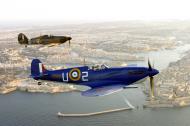
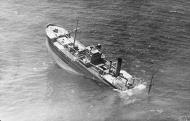
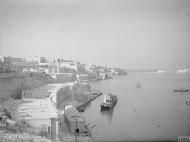
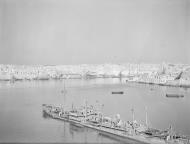
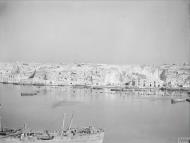

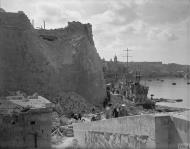
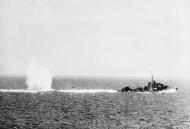
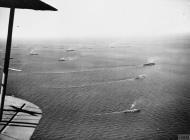

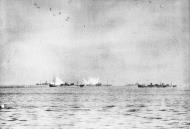
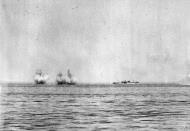
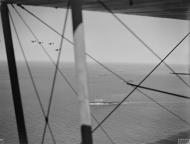
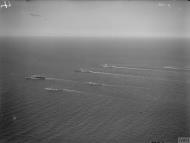
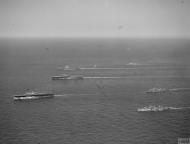
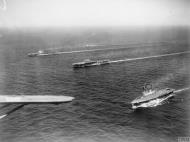
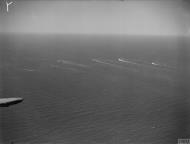
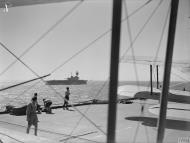

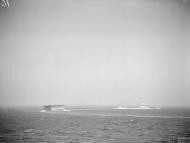
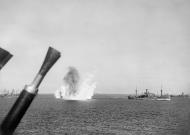
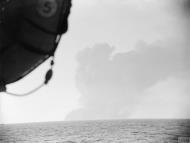
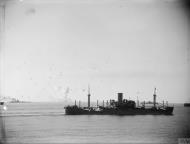
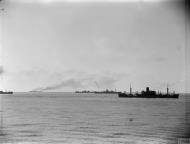
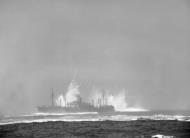
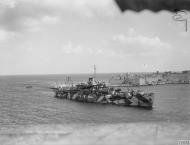


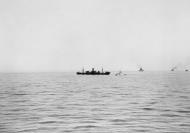
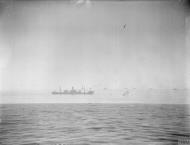
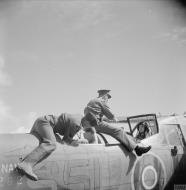
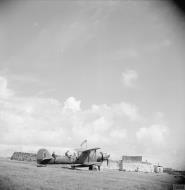
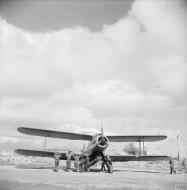
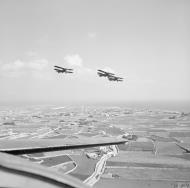
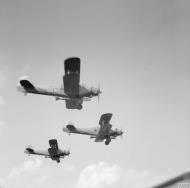
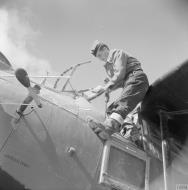
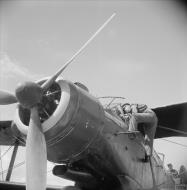

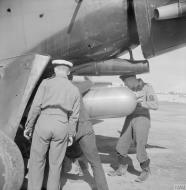
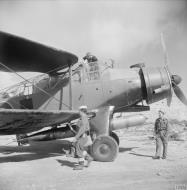
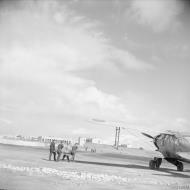
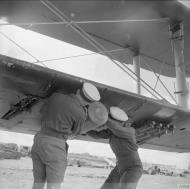
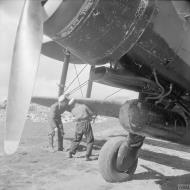
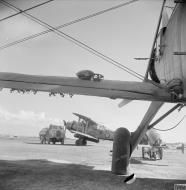
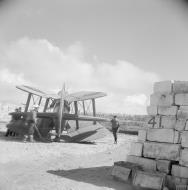
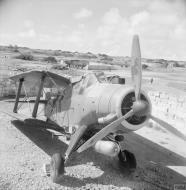
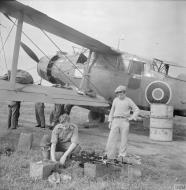
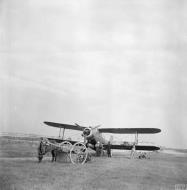
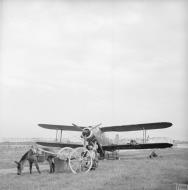
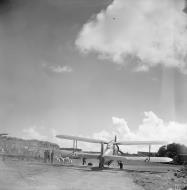
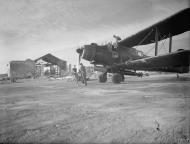
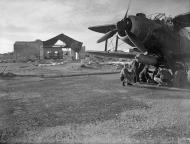
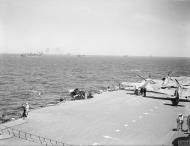
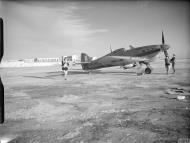
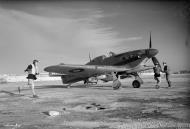
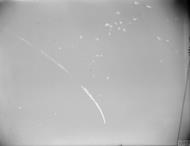
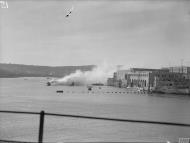

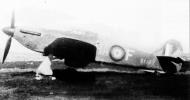
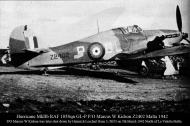







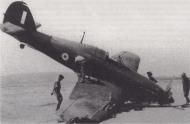
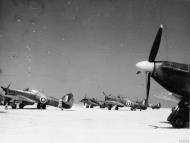
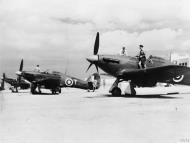
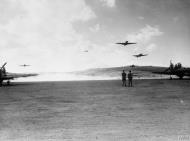


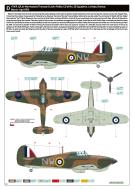


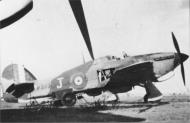

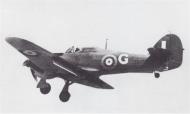
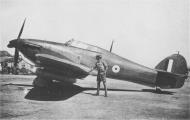
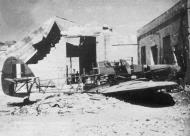
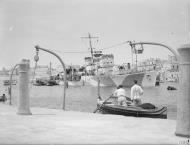
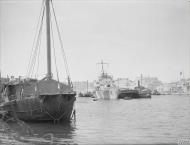
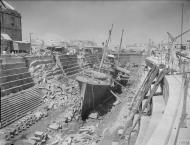
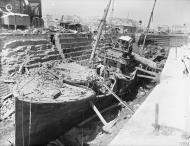
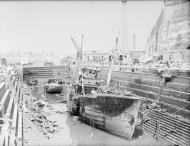
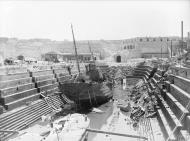

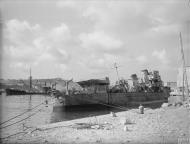
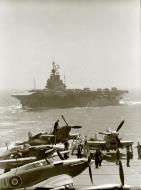
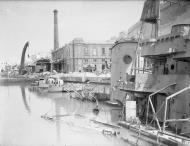
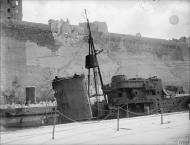
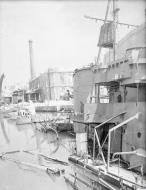
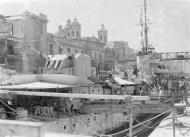
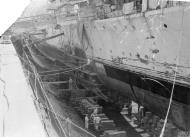
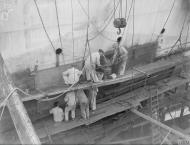
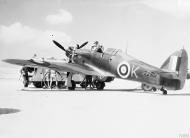
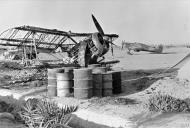
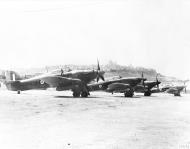
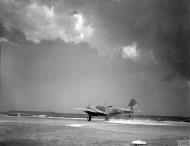
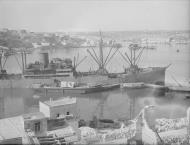
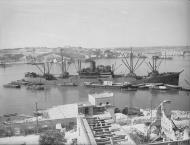
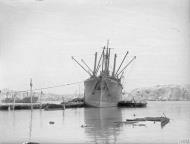
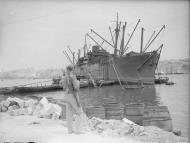
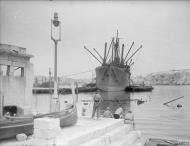
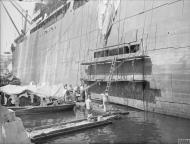
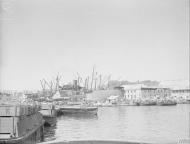
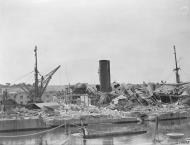
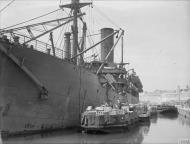
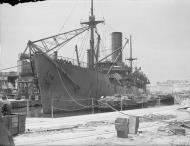
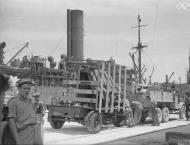
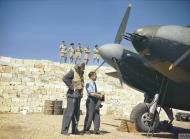
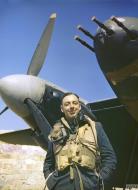
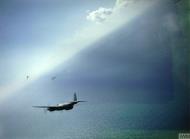
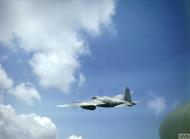
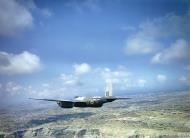
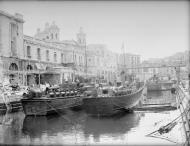
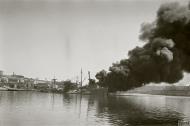
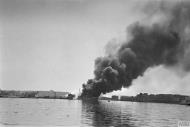
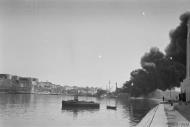
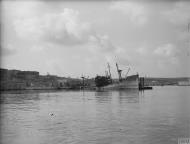
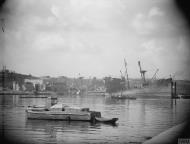
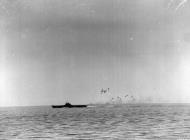
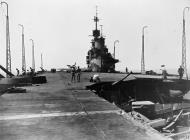
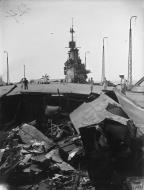
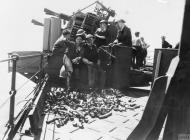
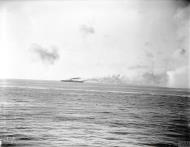
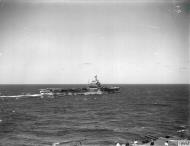
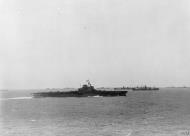
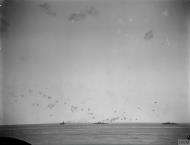
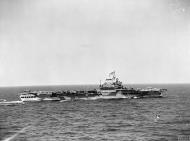
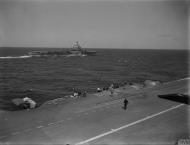
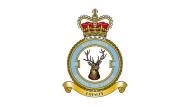
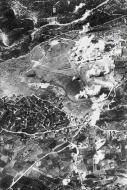
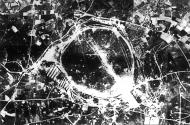
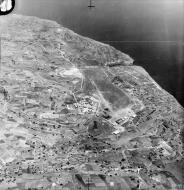
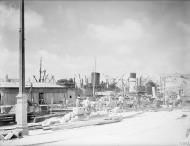
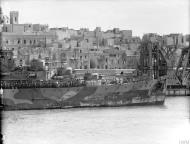
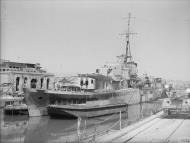
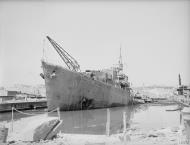
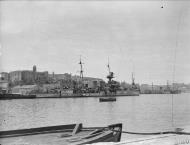
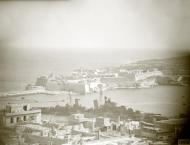
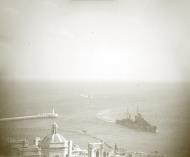
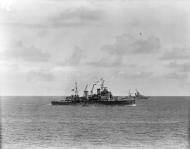
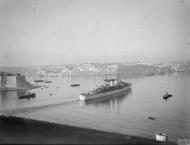
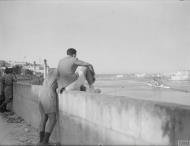
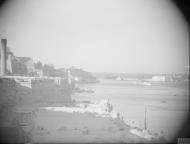
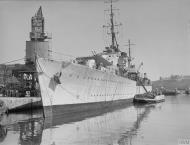
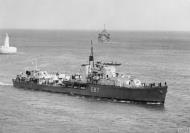
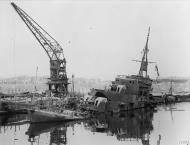
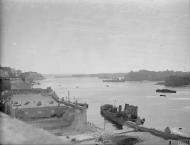
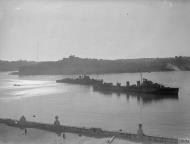
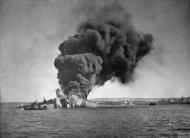
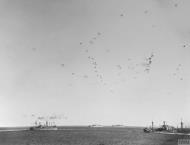
-n-SS-Port-Chalmers-discharging-cargo-on-arrival-at-Malta-19-24-Aug-1942-IWM-A11493.jpg)
